D Link PH-540 Wireless VoIP Flip-Phone User Manual RKP8 2 Manual Eng v1 3 20060529
D Link Corporation Wireless VoIP Flip-Phone RKP8 2 Manual Eng v1 3 20060529
D Link >
Manual
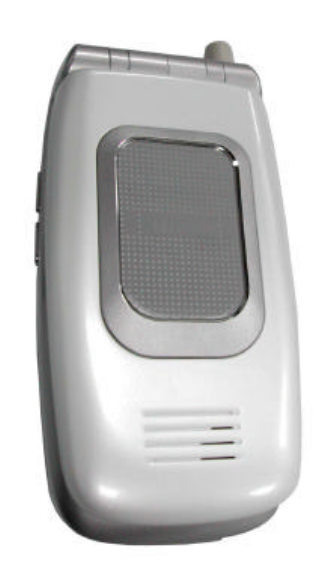
1
IEEE 802.11 b/g VoWLAN Handset
USER’s MANUAL 〉〉〉〉〉〉〉〉〉〉
March, 2006
(f/w version: 1.00.06 )
2
Contents
n 1. Getting Started 5
1.1 Reading this Manual 5
1.2 Package Contents 5
1.3 Charging the Battery 5
1.4 Switching the Phone On or Off 6
1.5 Power Saving Mode 6
1.6 Adjusting the Volume 6
1.7 Making a Call 7
1.8 Answering a Call 7
1.9 Using the Key Lock Feature 7
1.10 Using the Unlock Feature 8
1.11 Care and Maintenance 8
n 2. Phone Features 9
2.1 Overall Appearance 9
2.2 Overall Features 10
2.3 Product Specification 11
2.4 WLAN Application 11
Place a Call via “SIP Proxy Server” 11
n 3. Learning to Use Your Phone 13
3.1 Using the Icons 13
3.2 Entering Text 13
3.2.1 English Mode 13
3.2.2 Using Numeric Mode 14
3.2.3 Using IP Mode 14
3.2.4 While Making a Call 15
3.3 LED Indicators 15
3.4 Checking the Status 15
n 4. Setting Up Your Phone 16
4.1 Quick Ways to Set Up Your Wi-Fi Phone 16
4.2 Storing Names and Numbers 19
4.3 Setting the Time and Date 19
4.4 Setting a Ring Mode 20
3
4.5 Setting a Wallpaper Image 21
4.6 Setting the Display Contrast 21
4.7 Adjusting the Backlight 21
n 5. Calling Features 23
5.1 Viewing Recent Calls 23
5.2 Returning an Unanswered Call 23
5.3 Transferring a Call 23
5.4 Using the Call Mute 24
5.5 Using Call Waiting 24
5.6 Using Call Forwarding 24
n 6. Menus 26
6.1 Main Menu 26
6.1.1 Phonebook 26
6.1.2 Call Log 27
6.1.3 E-mail 28
6.1.4 Speed Dial 30
6.1.5 Profile 30
6.1.6 Settings 31
6.1.7 Tools 36
n 7. Web Configuration 38
7.1 Checking Wireless Network Status 38
7.2 Phone Book 38
7.3 Wireless Network Settings 39
7.4 SIP Settings 42
7.5 Phone Settings 42
7.6 E-mail Settings 43
7.7 Upgrade Software 43
7.9 Debug Statistics 44
7.10 Reboot Phone 44
7.11 Password 45
7.12 Logout 46
n 8 Troubleshooting 47
n 9 Federal Communication Commission
4
Interference Statement 48

5
1
1. Getting Started
1.1 Reading this Manual
Thank you for purchasing this Wi-Fi phone. To operate accordingly your new
phone, carefully read this user’s manual first. Screen displays and illustrations
in this user’s manual are designed to help you to operate all the steps directly
and precisely.
1.2 Package Contents
n One 802.11b/g VoWLAN handset;
n One Setup CD-ROM with user’s manual;
n One Li-ion battery;
n One power adapter or mini-USB cable.
1.3 Charging the Battery
New battery is shipped partially charged. Before you can use your phone, you
need to install and charge the battery.
1. Make sure the battery is installed properly.
2. There are two ways to charge the battery.
3. You can either plug the power adapter between the data cable slot on the
bottom of the phone and the socket.
4. Or use mini-USB cable to charge through your notebook or related device.
5. While charging, you can still do operations according to your preference
with the phone.
Note!
For the first time usage, it is recommended to charge the battery for at
least 8 hours.
The battery charging status is properly performed only after
uninterrupted charging/ discharging.
The battery heats up a bit during charging. This is not malfunction.
If the battery is completely exhausted, to be fully charged requires
approximately three hours (with the phone powered off).
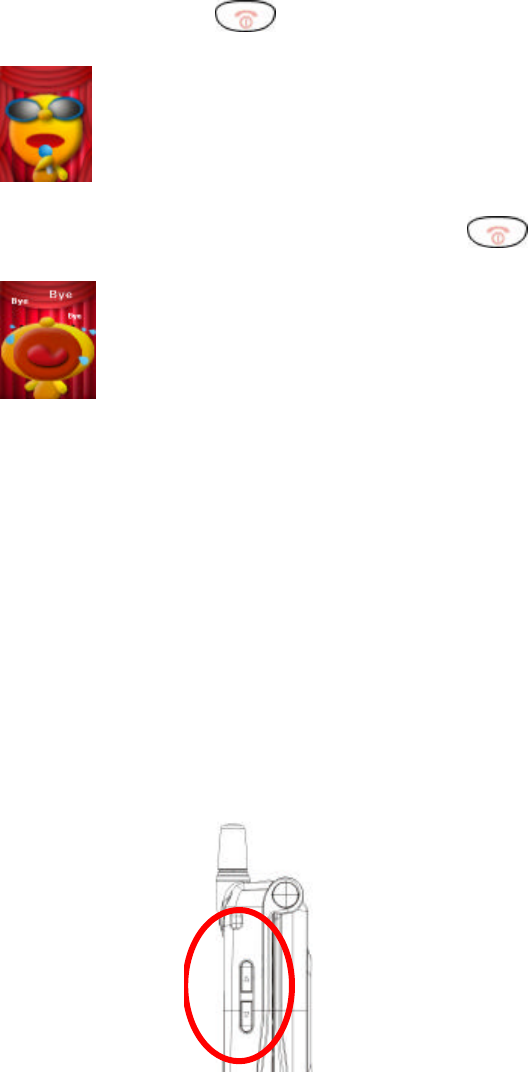
6
1.4 Switching the Phone On or Off
n Press and hold the Power key to turn ON the phone. An
animation will show up on the screen.
n To turn OFF the phone, press and hold the Power key . An
animation will display on the screen.
1.5 Power Saving Mode
n To save power consumption, the LCD monitor will turn dark after 15
seconds (as default) without any operations.
n To turn on again the LCD monitor, just press any key.
1.6 Adjusting the Volume
n You can press volume adjustment keys (Up or Down) to increase or
decrease the volume.
n Volume adjustment level also indicates on the screen.
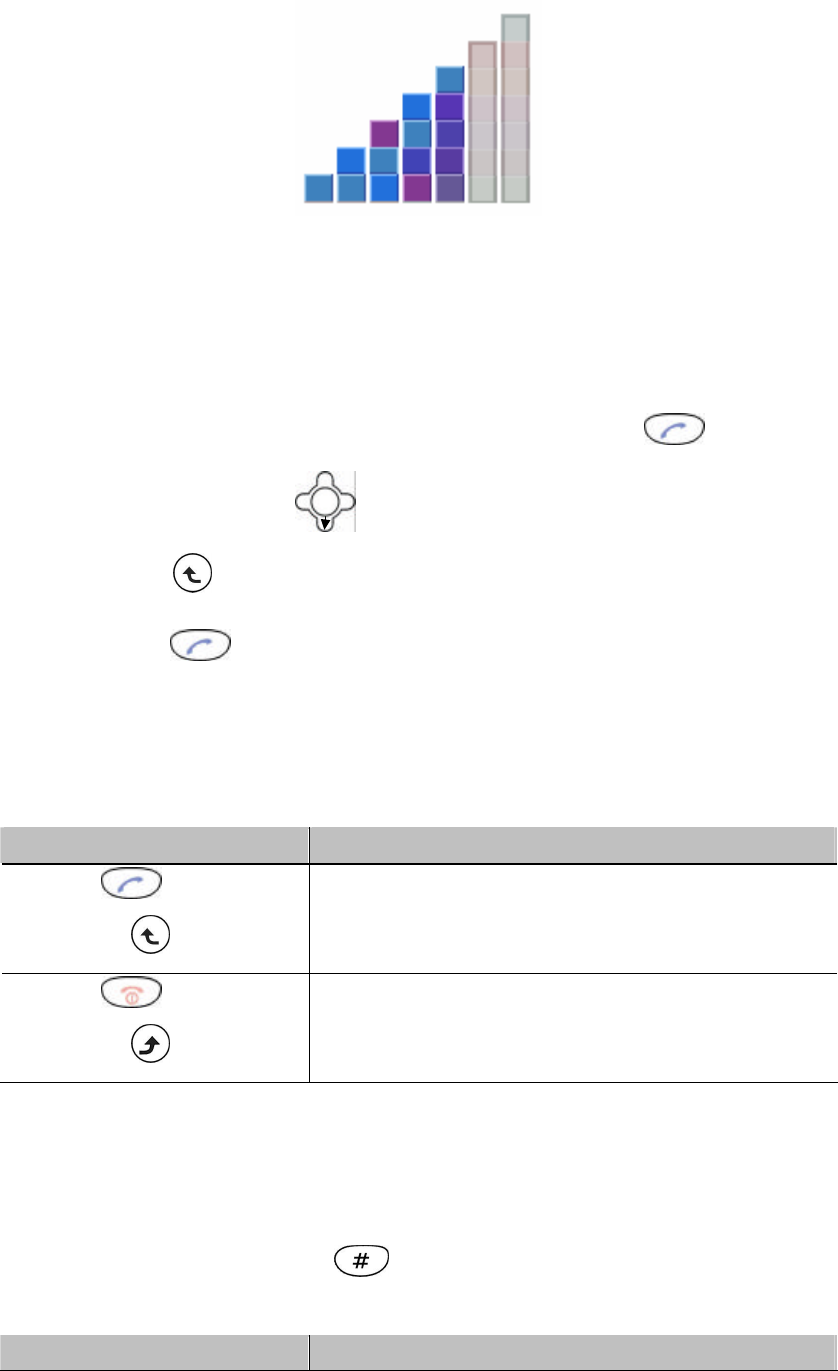
7
1.7 Making a Call
n It is necessary to set up your Wi-Fi phone first before making any calls.
(Details refer to chapter 4.1)
n There are two ways to make call:
Ø In Standby, enter the numeric keys and then press .
Ø In Standby, press
and your Phonebook displays.
Press to Search the desired contact member and then
press .
1.8 Answering a Call
n When you receive a call, your phone rings and/or vibrates and displays an
incoming call message.
Press To
Or
Accept and pick up the phone call.
Or
Reject the incoming phone call.
1.9 Using the Key Lock Feature
n Key lock is used to avoid unintentional pressing of keys.
n There are two ways to set the key lock function:
1. In Standby, press and hold key lock is then activated.
2. Or in menu option: Setting→Keypad→Keypad Lock
Press To
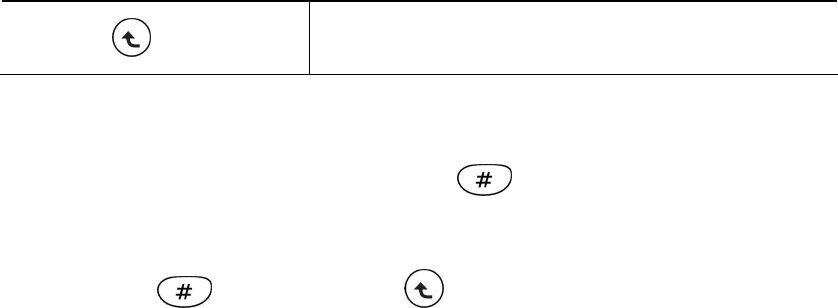
8
Activate key lock.
1.10 Using the Unlock Feature
1. To unlock the key lock, press and hold . A pop-up message displays
on the screen “Keypad Locked! It Can Be Unlock by Press and Hold #”
and press first then press OK to deactivate the key lock.
1.11 Care and Maintenance
n Keep your phone and accessories away from dusty, wet or dirty
areas.
n Don’t put your phone or accessories in extremely hot or cold areas.
n Don’t use harsh chemicals, cleaning solvents, or strong detergents to
clean your phone or accessories.
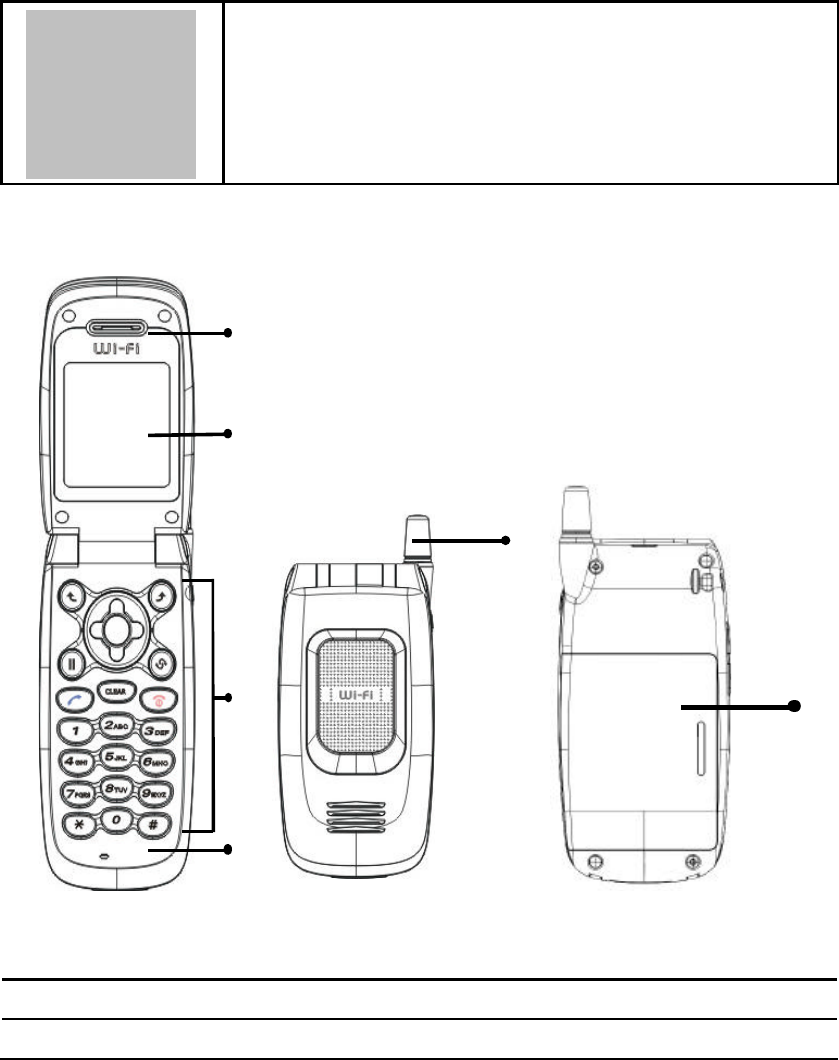
9
2
2. Phone Features
2.1 Overall Appearance
1
2
3
4
5
6
1. Earphone 4. Microphone
2. Screen 5. Antenna
3. Keypads 6. Battery
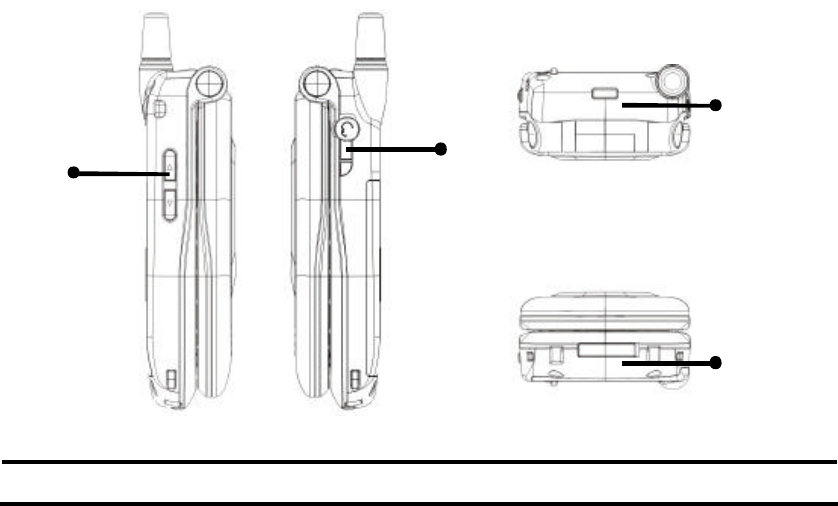
10
7
8
9
10
7. Volume adjustment keys 9. Strap eyelet
8. Earphone slot 10. Data cable slot
2.2 Overall Features
n Pixel-based display-Intuitive access to calling features.
n Nine speed dials configurable in the set.
n Comfort noise generation (CNG), voice activity detection (VAD) and
adaptive jitter buffer
n RF and battery level indication
n Local phone book
n External 2.4GHz antenna
n USB charger interface
n Multi-chords melody
n ABS+PC plastic housing
n Colorful LCM with backlight
n Simple keypad with backlight
n Remote FW upgrading via Wi-Fi
n Special keypads : Redial, Hold & Volume control
n SIP v2 signaling protocol, RFC-3261
n POP3/SMTP E-mail access
n SMS (optional, by system default)
n Enhanced security based on WEP/WPA/WPA2 (to be supported)
n Support WMM for QoS operation
n Embedded Site-Survey to ease WLAN search
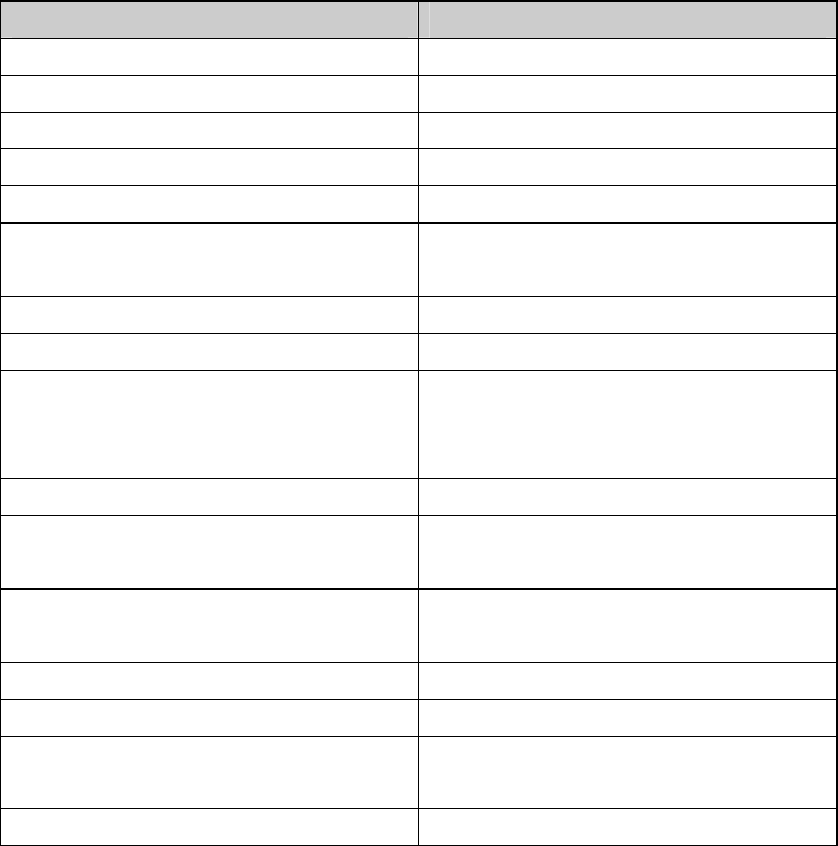
11
2.3 Product Specification
Item Description
CPU Ø BCM1160
Flash Memory Ø NOR 16MB
SRAM Memory Ø 12MB
Wireless LAN Standard Compliance Ø IEEE802.11b/g 2.4GHz
Wireless Frequency Range Ø 2.400~2.4835GHz
Output Power Ø Max. 13dBm @802.11g
Ø Max. 17dBm @802.11b
Data Transmission Rate Ø 1, 2, 5.5, 11Mbps up to 54Mbps
WLAN Network Architecture Type Ø Infrastructure
Operation Distance Ø Indoor: 20~50m
Ø Outdoor: ~250m (@11Mbps, in
light of sight area)
Channel Support USA:(1~11)
Modulation Technology Ø DSSS
Ø OFDM
LCD Ø 1.8” Colorful LCD, 128x160
pixel, 65k colors
Antenna Type Ø External antenna
Battery Ø Li-ion 900 mAh
Dimension Ø 112.9mm (L) x 48.7mm (W) x
27.3mm (H)
Weight Ø Approx. 106g
2.4 WLAN Application
Place a Call via “SIP Proxy Server”
Use your new Wi-Fi phone to make and receive VoIP telephone calls when you
are within range of a wireless Internet Telephony Service Provider (ITSP). You
do not need to know if the recipient’s connection type is an IP, cellular or
landline based service. Your Wi-Fi phone can call any landline or mobile
telephone that a traditional PSTN telephone can connect to as well as the IP
telephone network. Calls received from IP telephones works exactly as you
would expect from the traditional telephone service.
12
n Your Wi-Fi phone registers with a SIP proxy server in the following
circumstances:
Ø Your connection uses an IP Telephony Service.
Ø Your connection is based in a corporate VoIP environment.
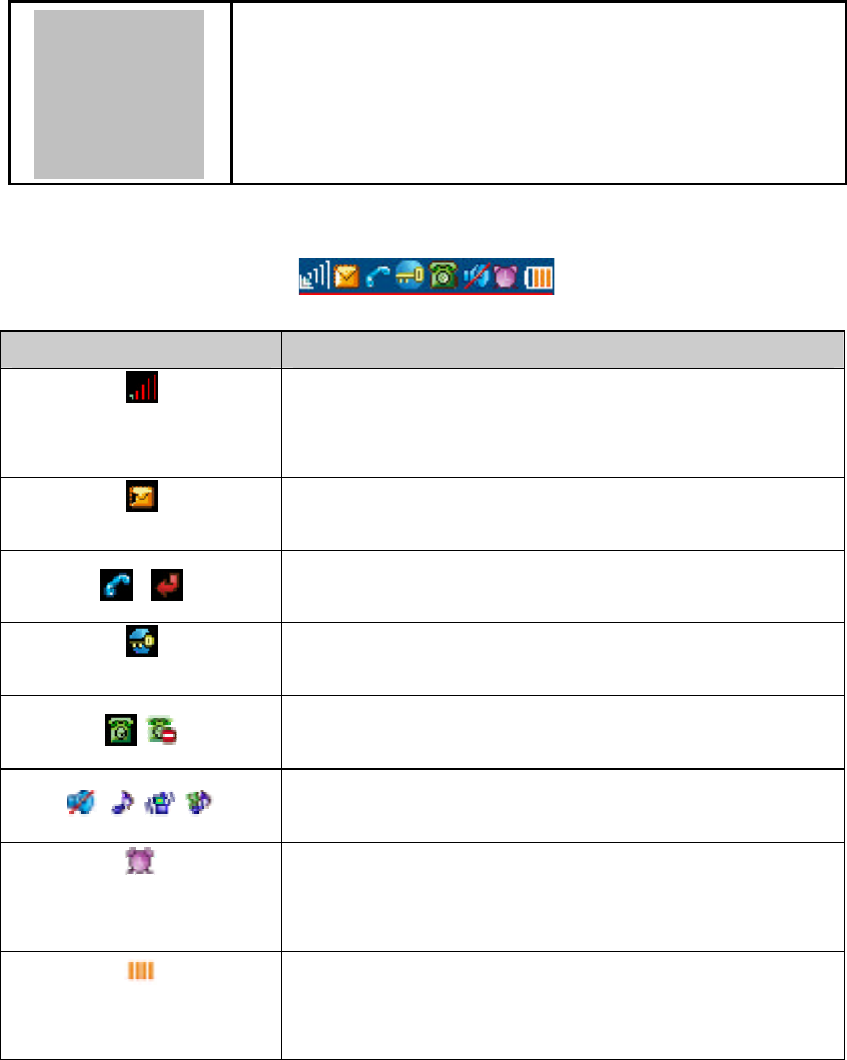
13
3
3. Learning to Use
Your Phone
3.1 Using the Icons
Icon Description
Signal Strength
Indicates the received signal strength. The greater
the number of bars, the better the signal
Message
When you have received new messages.
/ In Call / Call Forward
When you are on the phone or forward the call.
Network Encryption
When you have set for network encryption.
/ SIP Registered/ Not Registered
When you have (not) registered to SIP server.
/// Ring Mode (Silent/Ring/Vibrate/Ring+Vibrate)
Details refer to chapter 4.4 Setting a Ring Mode.
Alarm
Pops up when you set an alarm to ring at a
specified time.
Battery Level
Indicates the level of the battery. The more bars
you see, the more power you have remaining.
3.2 Entering Text
3.2.1 English Mode
n When inputting the text in English, press the key labeled with the
character you prefer:
-Once for the first character;
-Twice for the second character and so on…
This method is so-called Multi-tap typing.
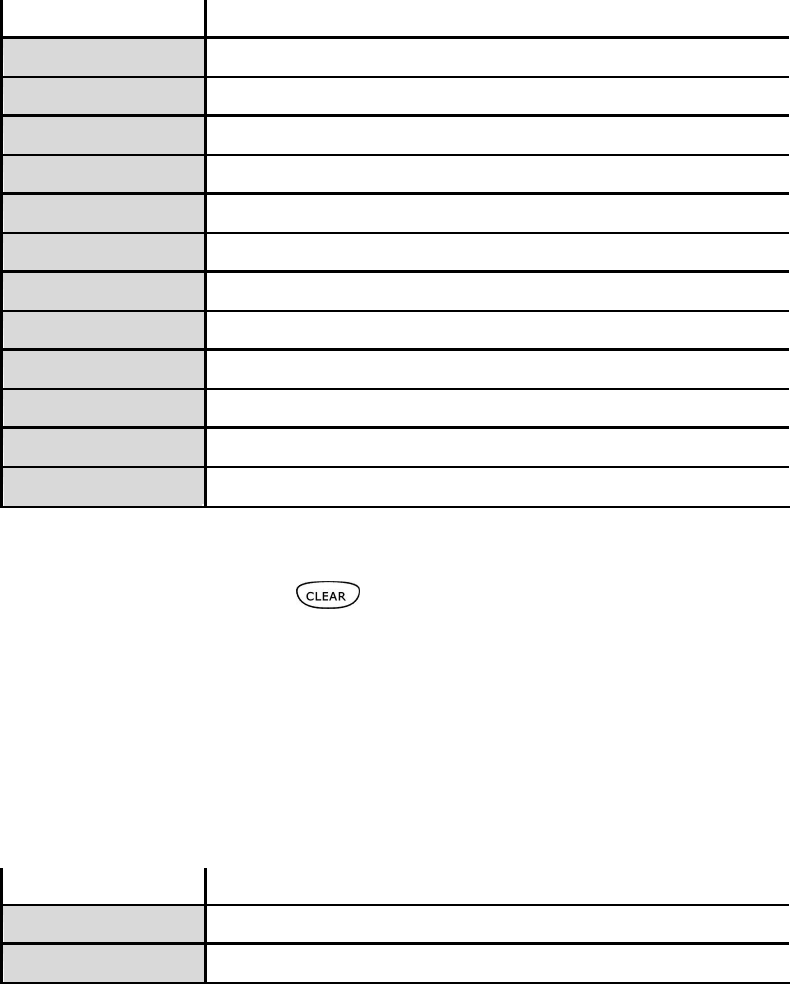
14
For example, you have to press the 5 key twice display the character
“K”, the 3 key five times to display the character “e” and the 6 key five
times again to display “n”.
n The cursor moves to the right when you press a different key. When
entering the same letter twice or a different letter on the same key,
just wait for a few seconds for the cursor to move to the right
automatically, and then select the next letter.
n You can insert a space between words/letters by pressing the 0 key.
n Refer to the chart below for detailed information about the characters
available:
Key Characters in the Order Displayed
0 space
1 " ' [ ] < > ( ) { }
2 ABCabc
3 DEFdef
4 GHIghi
5 JKLjkl
6 MNOmno
7 PQRSpqrs
8 TUVtuv
9 WXYZwxyz
* * . + - / , : ; = ? !
# # @ $ % & \ ^ _ ` | ~
n Clearing Letters and Words:
To delete letters, press the Clear key.
3.2.2 Using Numeric Mode
n Numeric mode enables you to input numbers in your text, such as
phone number. Press the keys accordingly to the digits you want
before manually switching back to the appropriate text input mode.
3.2.3 Using IP Mode
Key Characters in the Order Displayed
0-9 0-9
* *
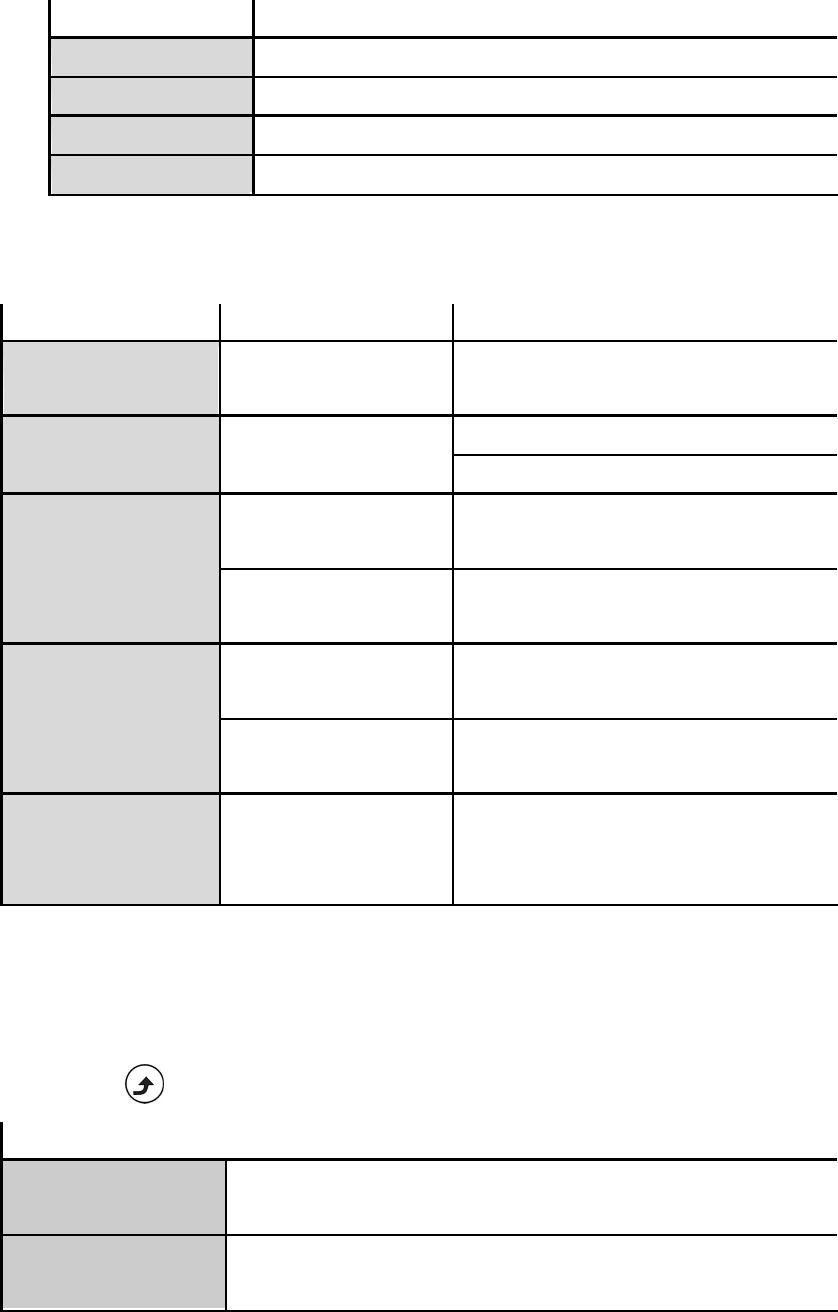
15
3.2.4 While Making a Call
Key Characters in the Order Displayed
0 0, + (press and hold)
1-9 1-9
* *
# #
3.3 LED Indicators
LED Indicator Status Description
Lighting seven
colors
Continuously rotating
When receiving an incoming call
When there is an unanswered call Blue Blinking
When a new e-mail is received
Blinking
When the phone is powered on and
the battery is charging
Red
Solid
When the phone is powered off and
the battery is charging
Blinking When the phone is powered on
and the battery is fully charged
Green
Solid When the phone is powered off
and the battery is fully charged
Magenta Blinking Acts as a warning message,
indicating that the battery is in low
level
3.4 Checking the Status
n You can always check your phone’s connection status (Wireless and
SIP phone) by using this option.
n Press Status:
Phone Status
Wireless You can view the following information:
BSSID, IP Address and MAC Address.
SIP Phone You will see the following information:
SIP Server, User Agent and Status,

16
4
4. Setting Up Your Phone
4.1 Quick Ways to Set Up Your Wi-Fi Phone
n First Step:
ü It is required to set password for the profile. A pop-up message displays
on the screen “No Password! Please Create a New Password.” After
the profile’s password is set, you need to input the configured password to
enter the profile menu.
1. Press Menu and then press
to select Profile.
2. Input the profile’s password first.
3. Press
and select SIP Account and then press Option.
4. Press
to Edit.
5. Six profiles can be set in this feature. Only one profile can be activated at a
time. Adjust the following options as basic operations: (other adjustments
are based on the requirements by each individual network provider.)
Ø Preview: detailed information (Phone Number/Auth.ID/ SIP Domain/
Proxy Port/ Outbound Address/ Outbound Port/ Local Port/ Reg.
Timer(sec)/ Codec/ Pkt Time(ms)/ OutBand DTMF) is listed.
Ø Phone Number: numbers are given by the network provider. For
example: 233.
Ø Auth. ID: input your authorized user ID. For example: 233.
Ø Auth. Password: input your authorized password.
Ø SIP Domain: stands for Session Initiation Protocol domain name.
The domain of the phone.
Ø Proxy Address: the address of SIP server. For example:
192.168.0.1.
Ø Advanced: The following options are indicated:
Proxy Port The port number of SIP server.
Outbound Address
Outbound proxy address.
Outbound Port Outbound proxy port.
Local Port Local port number.
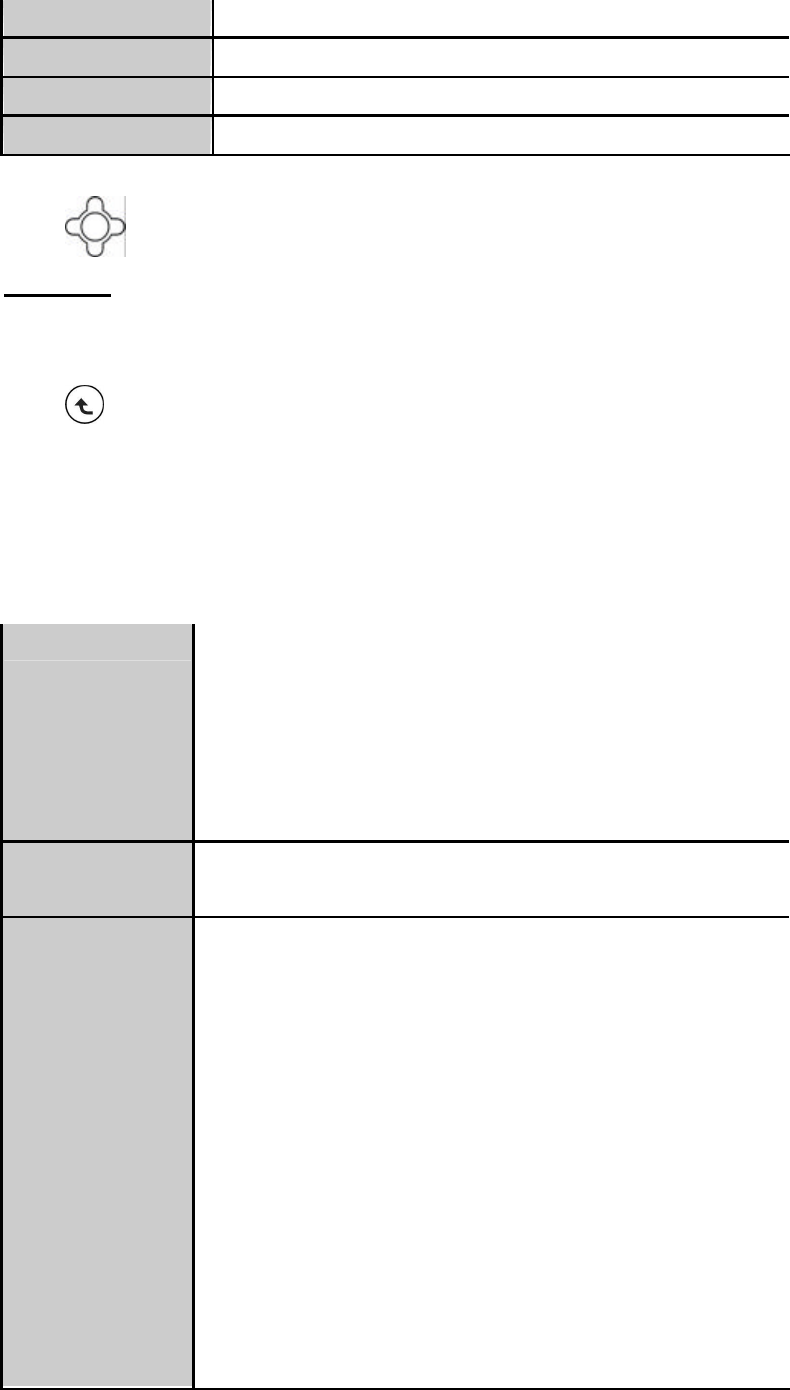
17
Reg. Timer(sec) Registration refreshing interval.
Codec Compressed audio format.
Pkt Time(ms) Audio transmitting interval.
OutofBand DTMF
The working of out-of-band dual-tone multifrequency.
6. Press OK to confirm your settings.
n Last Step:
1. In Profile menu, after finishing SIP Account setting, access to Network
Profile.
2. Press Option to Edit-Preview, Wireless Settings, IP Settings,
Account Choice, Hotspot Choice and NAT Settings.
Ø Preview: detailed information (Wireless:Profile/ ESSID/ Data Rate/
Security/ Auto Detect; IP Settings:Status/ DHCP; SIP Account:Status;
Hotspot:Status; NAT Settings:NAT Solution) is listed.
Ø Wireless Setting: The following options are indicated:
ESSID Stands for Extended Service Set Identifier. By
specifying the ESSID is how you make sure that you
connect to your wireless network instead of your
neighbors network by mistake. You can either manually
input the New ESSID or select Site Survey to check
the all available networks. For example: Default.
Data Rate Select a specific data rate 1 Mb/s, 2 Mb/s, 5.5 Mb/s, 6
Mb/s, 9 Mb/s, 11 Mb/s or set as Auto.
Security Act as your usage permission passport. This is an
effective way to achieve data security. Your network
provider should inform you about the authentication
types for the access point encryption modes.
Options for you to choose:
ü Open;
ü WEP (either select WEP-64 or WEP-128 bit)
(Network dependent);
→Setting WEP as Security, you can define WEP
Key Index from One to Four in Key Index.
→You can set WEP key to ensure data
transmission from wireless access points in Key.
ü WPA-PSK (either select WPA-PSK TKIP
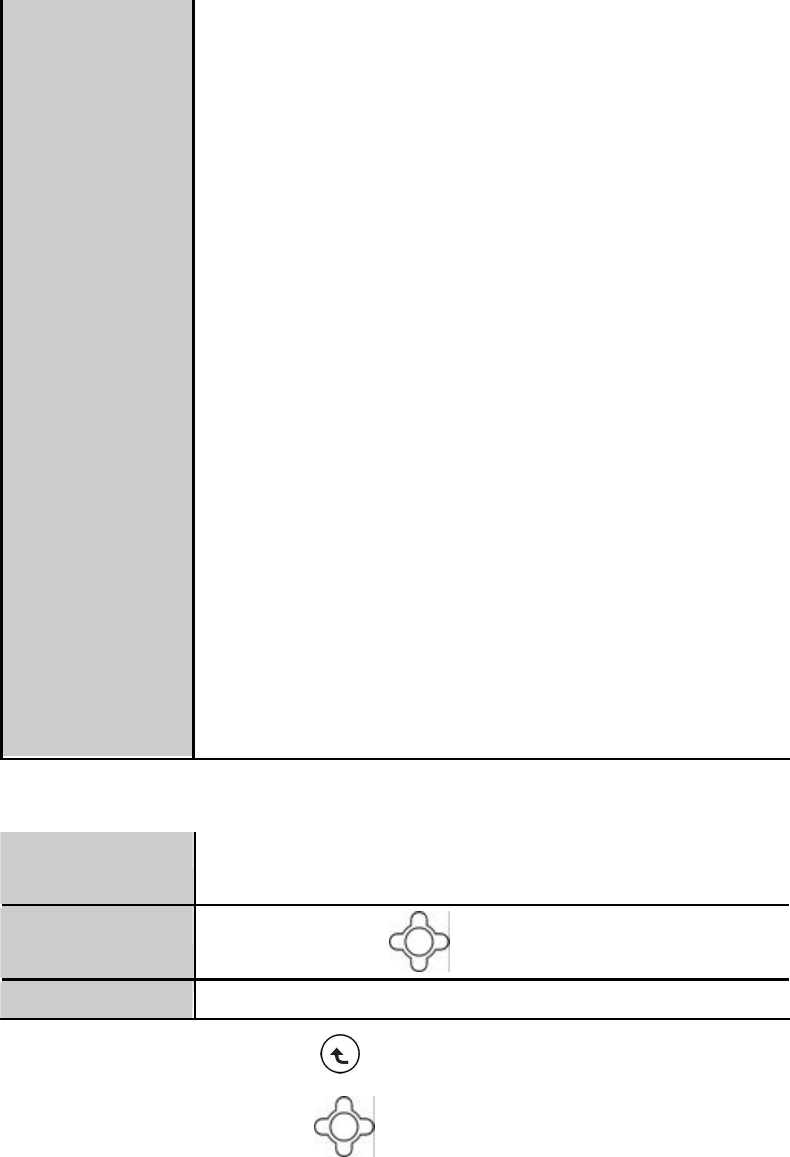
18
automatically changes the keys at a preset time
interval, making it much more difficult for hackers to
find and exploit them or WPA-PSK AES as
advanced encryption standard) (Network
dependent);
→ You can set key to ensure data transmission
from wireless access points in Key.
ü WPA2-PSK (either select WPA2-PSK TKIP or
WPA2-PSK AES ) (Network dependent).;
→You can set key to ensure data transmission from
wireless access points in Key.
ü WPA (either select WPA TKIP or WPA AES )
(Network dependent)
→You can set EAP (MD5, GTC, MSCHAPv2,
LEAP, TLS or TTLS), Identity, User Name,
Password, CA Cert., User Cert. and Private Key.
ü or WPA2 (either select WPA2 TKIP or WPA2
AES ) (Network dependent)
→You can set EAP (MD5, GTC, MSCHAPv2,
LEAP, TLS or TTLS), Identity, User Name,
Password, CA Cert., User Cert. and Private Key.
Ø IP Setting: The following options are indicated:
Fixed IP
You need to input IP Address, IP Netmask, IP Gateway,
Primary DNS and Secondary DNS.
DHCP
To activate press Set .
PPPoE Input User Name and Password.
Ø Account Choice: Press Select to set the specific SIP Account.
Ø Hotspot Choice: Press Set to select the specific Hotspot or
Off.
Ø NAT Settings: Details please contact with your network service
provider.
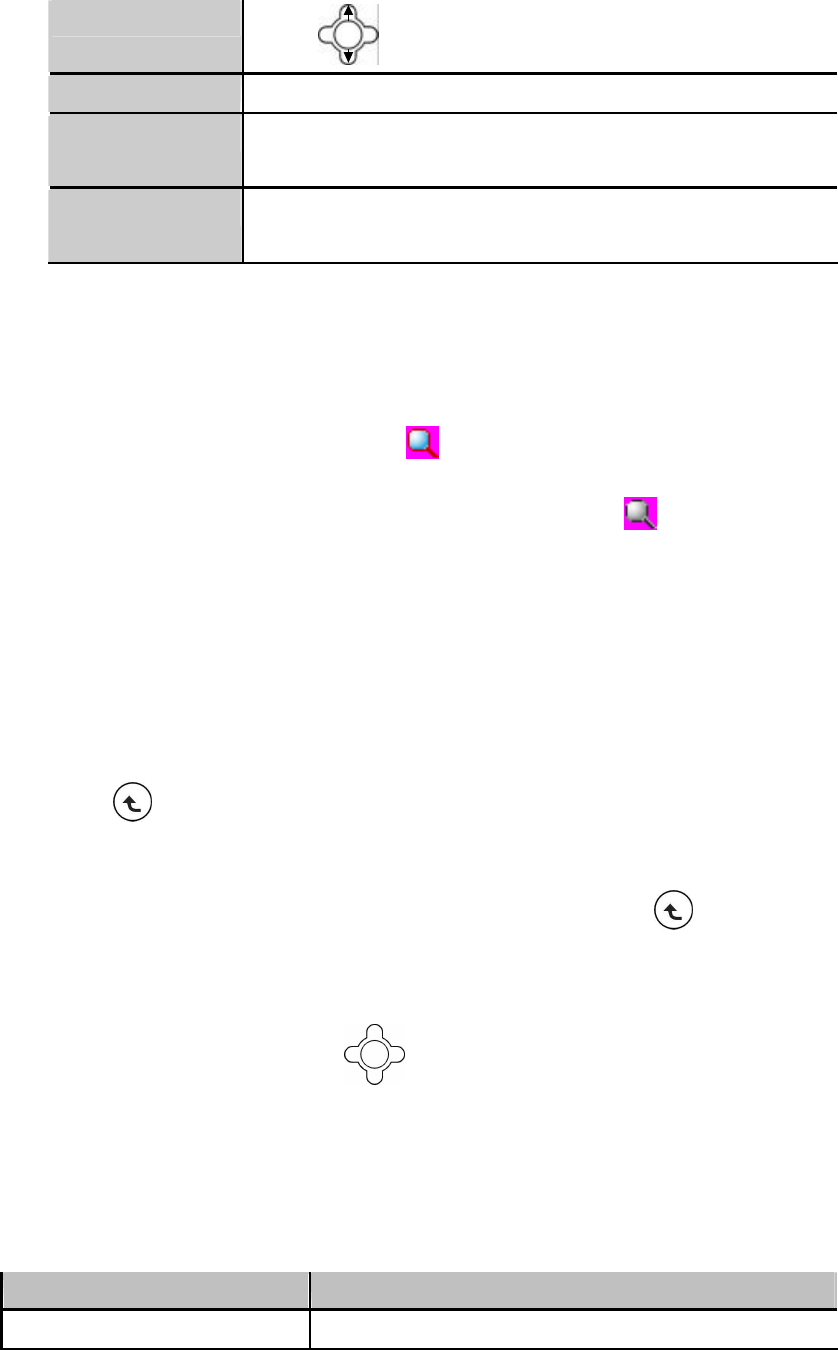
19
NAT Solution
Press
to select Disable, SIP PING or STUN.
NAT Timer You can set from 0 to 65535 sec.
STUN Address
Consult the IP address with your network service
provider.
STUN Port Consult the Port number with your network service
provider.
3. After finish setting-Wireless Setting, IP Settings, Account Choice, Hotspot
Choice and NAT Settings, back to Profile Option select Auto Detect as On.
4. Back to Network Profile, all available profiles will be listed according to the
signal strength with the displayed icon. (If the profile is set as Auto
Detect-Off then the displayed icon will be indicated as ).
4.2 Storing Names and Numbers
n You can store or edit your friends’ name and phone number information on
your phonebook.
n 200 entries can be recorded in the Phonebook.
1. Phonebook→ Option→ New.
2. Press Select to input the appropriate Name, Number, E-mail, Ring
Tone and set the Speed Dial.
Ø Scroll the input method by pressing the left soft key .
Ø The selected text input method indicator shows at the left bottom
of the screen. (English mode→ ABC or Numeric mode→123).
3. After filling the details press OK to confirm your settings.
4.3 Setting the Time and Date
n It is necessary to set the time and date to fully use your phone features.
n Set the time:
1. Setting? Clock? Time.
Press To
0-9 Enter the time directly
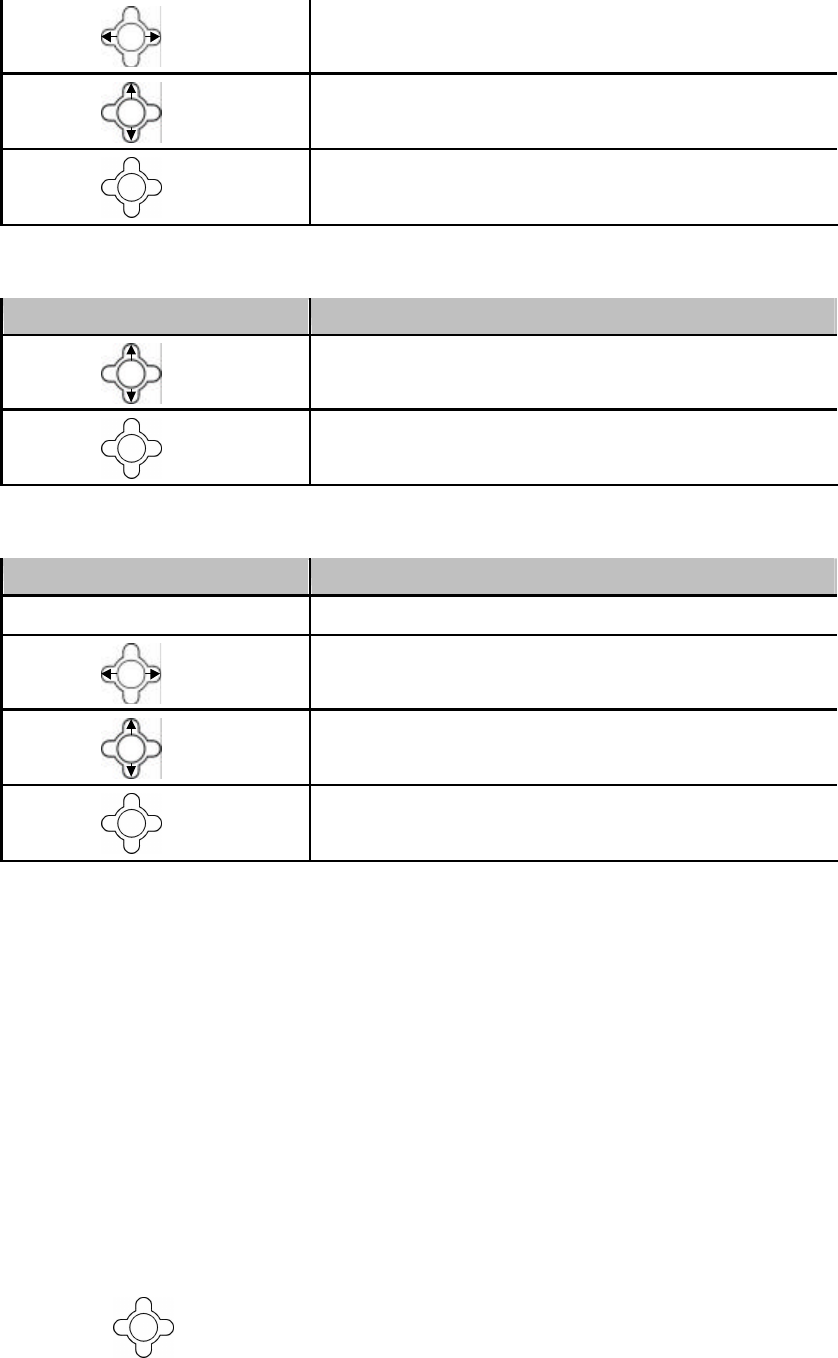
20
Scroll right or left to change
hours/minutes/seconds
Scroll up or down to change the time or to
choose AM or PM
Confirm your time setting
n Set the time format:
1. Setting? Clock? Time Format.
Press To
Scroll up or down to choose
12-Hour or 24-Hour
Confirm your time format setting
n Set the date:
1. Setting? Clock? Date.
Press To
0-9 Enter the date directly
Scroll right or left to change
years/months/days
Scroll up or down to increase or decrease
the date
Confirm your date setting
4.4 Setting a Ring Mode
n Your phone rings or vibrates to aware you of an incoming call or other
event. This ring or vibration acts as an alert.
n You can select 1 to 17 different melodies.
n Set the Ring Mode:
1. Setting? Sound Settings? Ring Mode.
2. The following options are available:
Ø Silent: the phone neither rings nor vibrates.
Ø Ring: the phone rings using the selected ring melody.
Ø Vibrate: the phone vibrates but does not ring.
Ø Ring + Vibrate: the phone first rings and then starts to vibrate.
3. Press Set to confirm your setting.

21
n Set the Ring Tone:
1. Setting? Sound Settings? Ring Tone.
2. Press
to select Melody.
Press To
Scroll up or down to different ring melody
Play the selected melody
Set your ring tone melody
4.5 Setting a Wallpaper Image
n You can set a picture as wallpaper image in your phone’s standby screen.
n There are five built-in pictures for you to change the background image.
1. Setting? Display Setting? Wallpaper.
Press To
Scroll up or down to different wallpaper
View the selected wallpaper
Set your background image
4.6 Setting the Display Contrast
n You can adjust the LCD Contrast of the display screen to see it better in
different coloring conditions.
1. Setting? Display Settings? LCD Contrast.
Press To
Increase or decrease the LCD color
contrast level
Set your display contrast level
4.7 Adjusting the Backlight
n You can adjust the brightness of the display screen to see it better in
different lighting conditions.

22
1. Setting? Display Settings? LCD Brightness.
Press To
Increase or decrease the LCD lighting level
Set your display lighting level
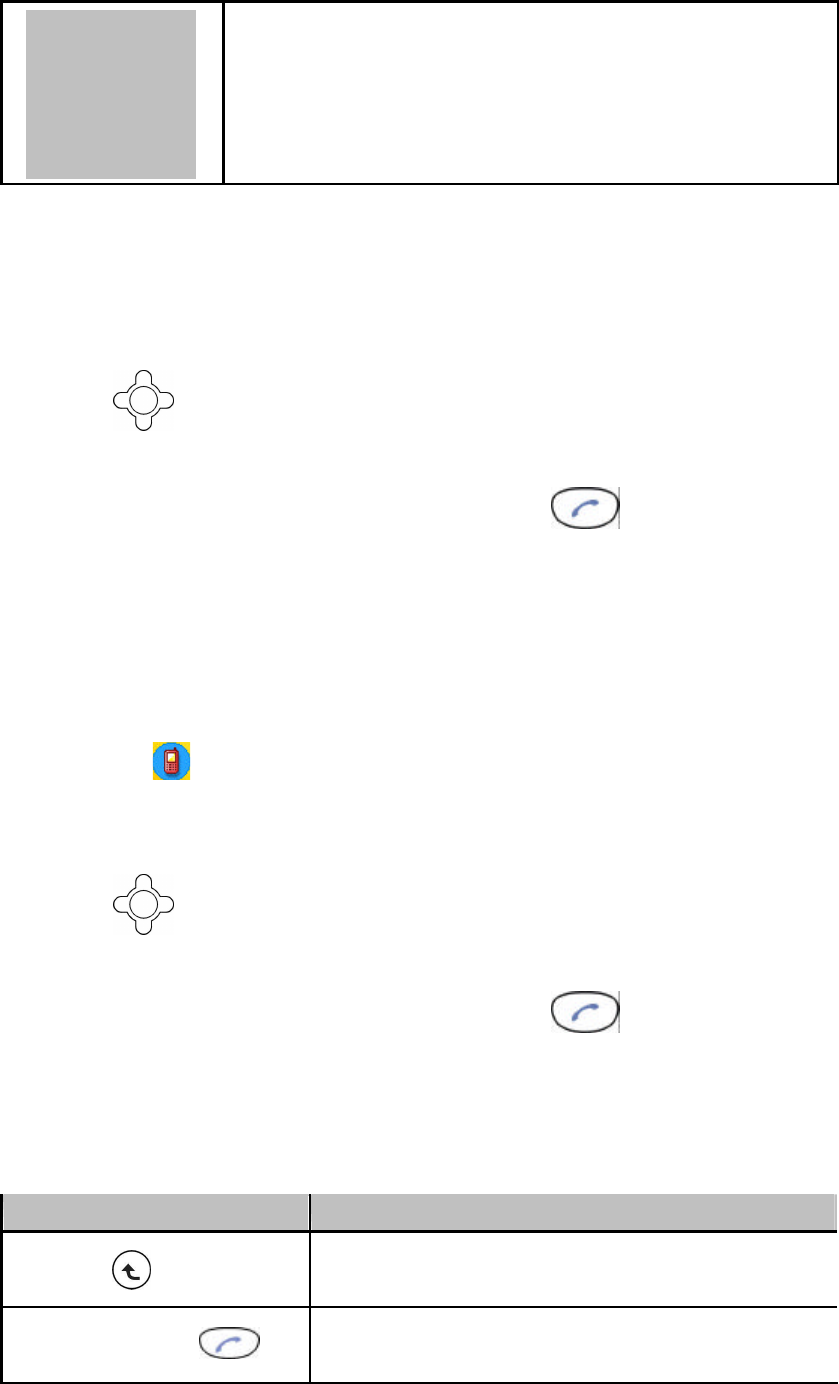
23
5
5. Calling Features
5.1 Viewing Recent Calls
n Your phone keeps lists of the calls you recently received and dialed, even
if the calls did no connect.
1. Call Log→ Dialed Calls/ Received Calls.
2. Press View the name and/or the numbers, if available, display
together, with the time and date when the call was received.
3. You can also redial the number by pressing the key.
5.2 Returning an Unanswered Call
n This option lets you check the last phone calls you received, but did not
answer.
n Your phone keeps a record of your missed calls, and displays:
Ø The (missed call) indicator;
Ø X Missed Calls, where X is the number of unanswered calls.
1. Call Log→ Missed Calls.
2. Press View the name and the numbers, if available, display together,
with the time and date when the call was received.
3. You can also redial the number by pressing the key.
5.3 Transferring a Call
n When you are on a call, you can announce that you are transferring an
active call to another party, or you can directly transfer the call.
Press To
Put the call on Hold
Keypad keys and Dial the 3rd party numbers and place a new
call
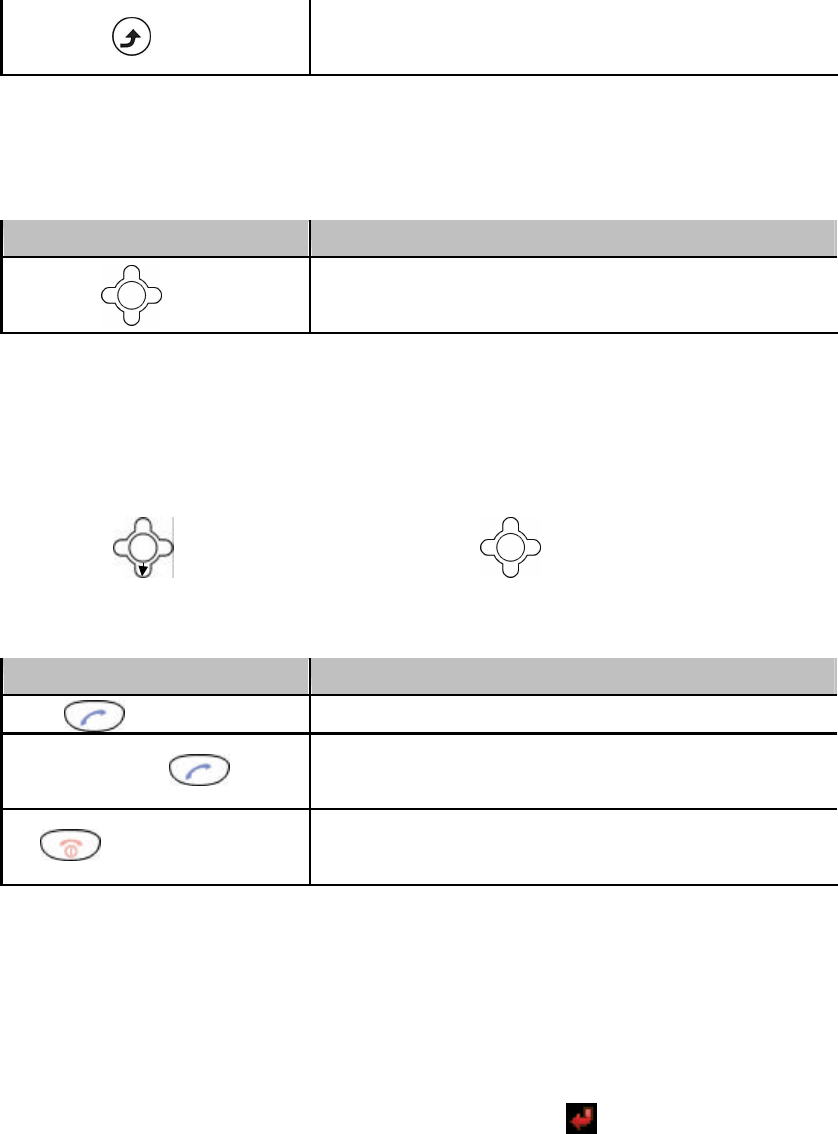
24
While 3rd party is connected to execute
transfer function.
5.4 Using the Call Mute
n When you are on a call, you can turn off your microphone so that the peer
party will not hear your voice.
Press To
Switch between to hear or to mute caller’s
voice
5.5 Using Call Waiting
n When you are on a call, an alert tone sounds to indicate that you have
received a second call.
1. Settings→ Call Settings→ Call Waiting:
2. Press
to select On and then press Set to activate Call
Waiting function.
3.
Press To
Answer the new call
Switch ( ) Switch between the calls
> End Call End the call on talk
4. If Call Waiting is set as Off, then the second incoming call will be
rejected. The alert tone will not be activated either.
5.6 Using Call Forwarding
n You can divert a call to another number, based on different conditions.
n When Call Forwarding is activated, an icon
will be displayed on
the screen.
n To activate call forwarding function: there are four features that you
can choose:
1. Settings→ Call Settings→ Call Forward:
l Foward Number: will transfer the call to the designated number
under specified conditions.
l Forward All: will transfer all calls under any conditions.
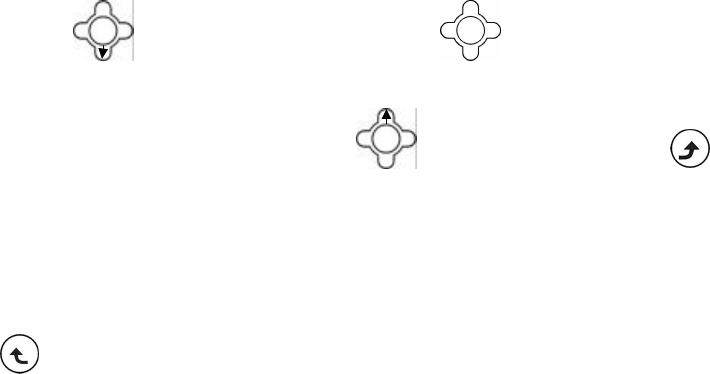
25
l No Answer: will divert the call after 18 seconds when the call is
unanswered.
l Busy: will transfer the call when then line is busy or the call is
rejected.
2. Press
to select On and then press Set to activate Call
Forward function.
3. To deactivate the function, press
to select Off and press Back
to menu.
n To deactivate call forwarding function:
1. Setting→ Call Setting→ Call Forward, choose Cancel All and press
Select.
2. The Call Forward function is then set deactivated.
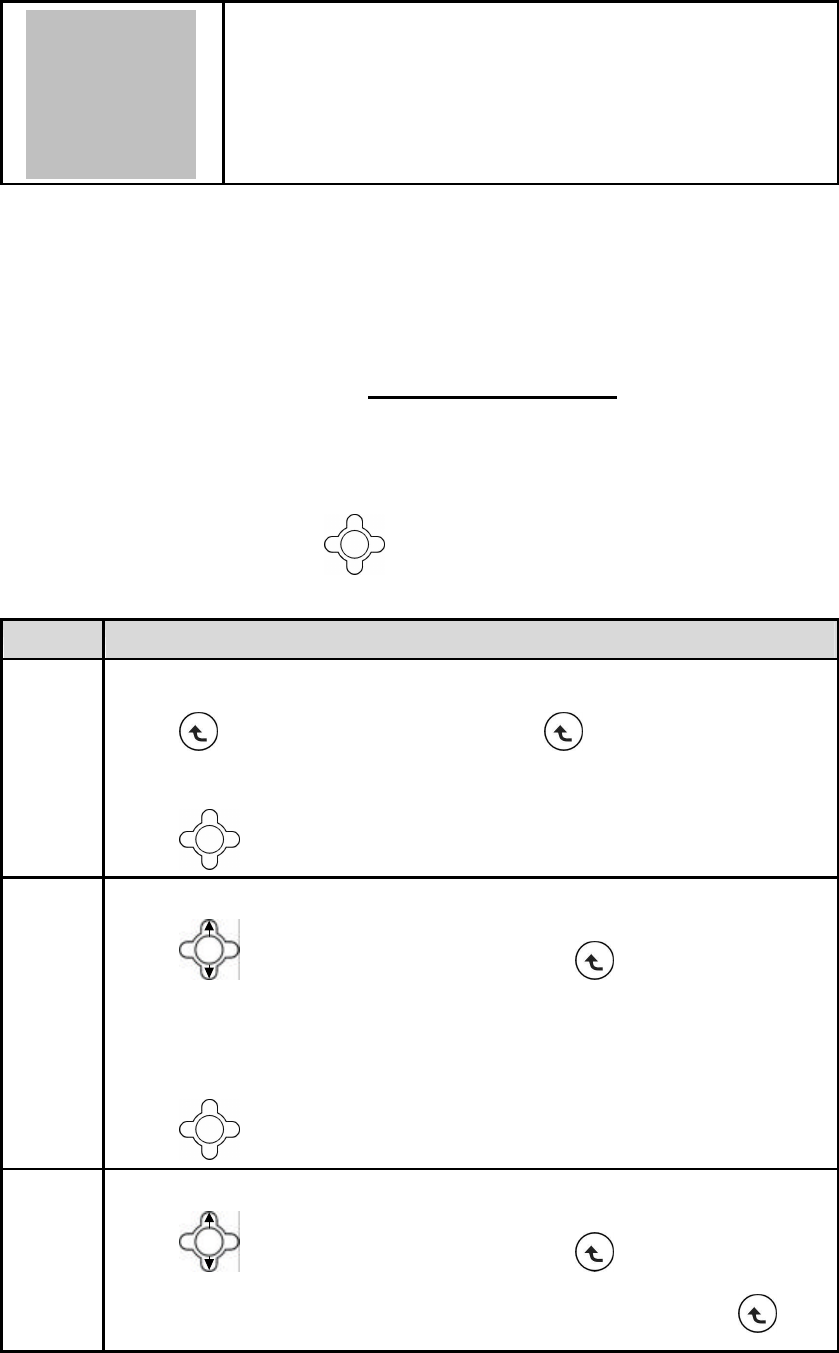
26
6
6. Menus
6.1 Main Menu
6.1.1 Phonebook
n This section helps you to use Phonebook’s features.
n After storing entries in your Phonebook, you can search for them and view
for details.
n The entries are listed according to alphabetical order. After finding the
appropriate name, press View to check the details.
Feature
Description
Search
Phonebook→Search
Press Option to Search and press Select.
You are asked to enter the name.
Press OK to find the appropriate entries.
Edit Phonebook→Edit
Press
to scroll the list and then press to Edit.
You can either modify the name, number, e-mail, ring tone and/or
speed dial.
Press OK to confirm your settings.
Delete
Phonebook→Delete
Press
to scroll the list and then press to Delete.
A pop-up message “Delete?” displays on the screen press OK
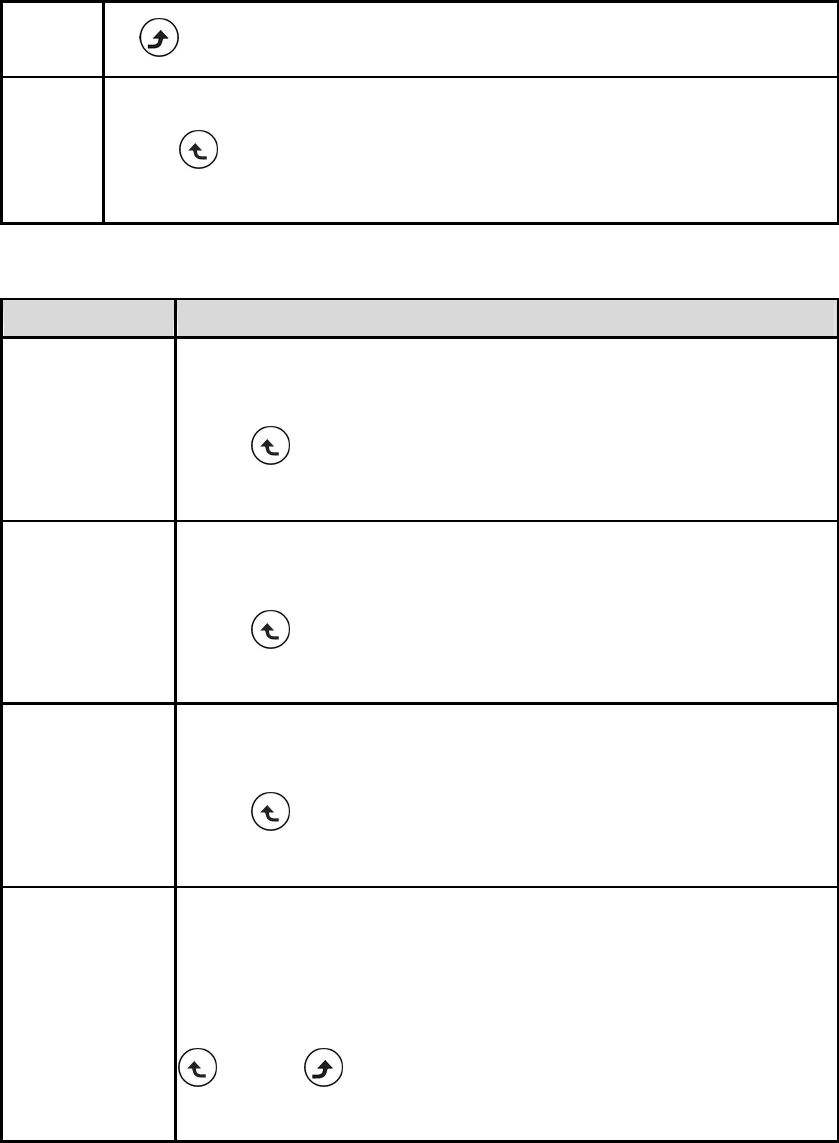
27
or Back to cancel the deletion and return to the menu.
New Phonebook→New
Press Select to Preview and input the appropriate Name,
Number, E-mail, Ring Tone and set the Speed Dial.
6.1.2 Call Log
Feature Description
Missed Calls Details refer to chapter 5.2 Returning an Unanswered Call.
Call Log→Missed Calls
Press Option and you can Save, Delete the Record or
Delete All Missed calls.
Dialed Calls Details refer to chapter 5.1 Viewing Recent Calls.
Call Log→Dialed Calls
Press Option and you can Save, Delete the Record or
Delete All Dialed calls.
Received Calls
Details refer to chapter 5.1 Viewing Recent Calls.
Call Log→Received Calls
Press Option and you can Save, Delete the Record or
Delete All Received calls.
Delete All You can remove all records (missed, dialed and received)
from the Call Log,
Call Log→Delete All
A pop-up message “Delete All?”
displays on the screen press
OK or Back to cancel the deletion and return to the
menu.
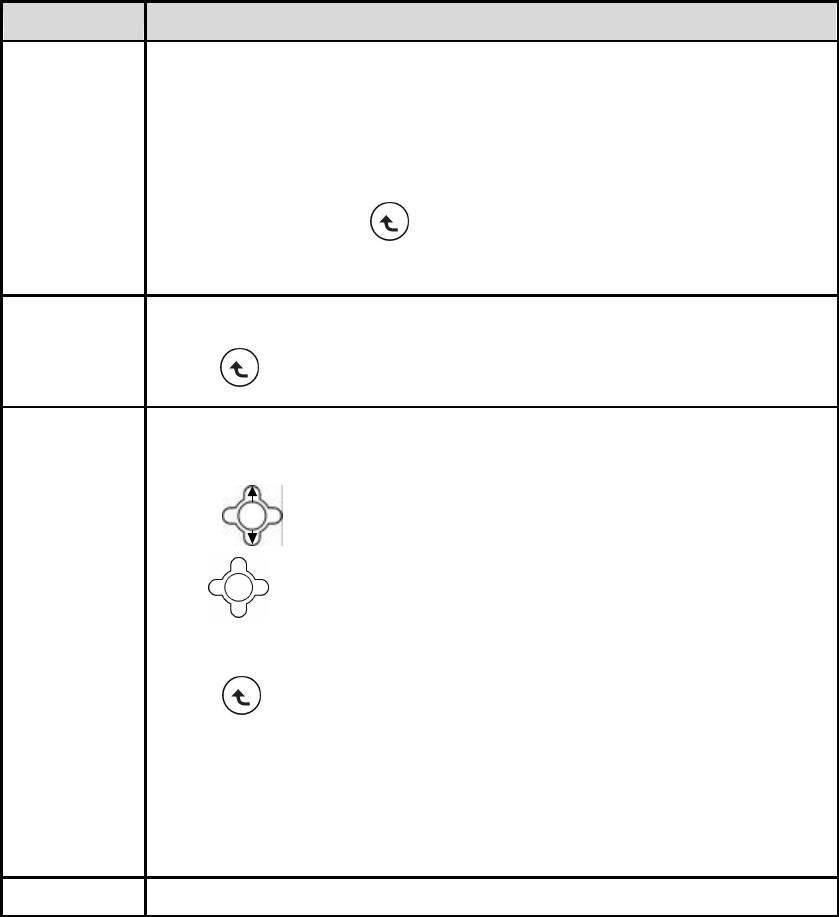
28
6.1.3 E-mail
n Using the Mail-feature, you can receive or send messages instantly.
n Receiving or Sending e-mails are based on POP3 and SMTP system
design.
n To use this feature you are required to have an e-mail account (a specific
username and password) from your e-mail service provider.
n The maximum storage size is 500 mails for Inbox, Outbox and Draft all
together.
n Before an e-mail account is configured, entering the E-mail menu will
directly guide you to enter Account Setting.
n To save power consumption, the phone does not automatically scan mails
in mailboxes.
Feature Description
Write New
Writing new mails, you can Preview the subject, recipients and
content; fill in the Subject, add the Recipients (either Input
Address directly or Add By the Phonebook), write the Content
,
and then you can either Save To Draft or Send the Mail.
While editing, press to switch the input method (ABC or
0-9).
Receive A pop-up message “Receive Mails?” indicates on the screen,
press OK then you can receive new mails.
Inbox This menu allows you to access your e-mail Invox and read the
e-mail messages you’ve received.
Press
to the mail you want to read and then
press View . Details (From, Date, Recipients, Subject and
Content) are indicated.
Press Option you can also Reply, Reply with Log (reply
with the original content), Forward (either Preview the detail,
read the Subject, set the Recipients, write the Content, Save
To Draft or Send Mail) or Delete the mail or Clear
all mails in the
Inbox.
Outbox When you enter this option, the list of the e-mail messages
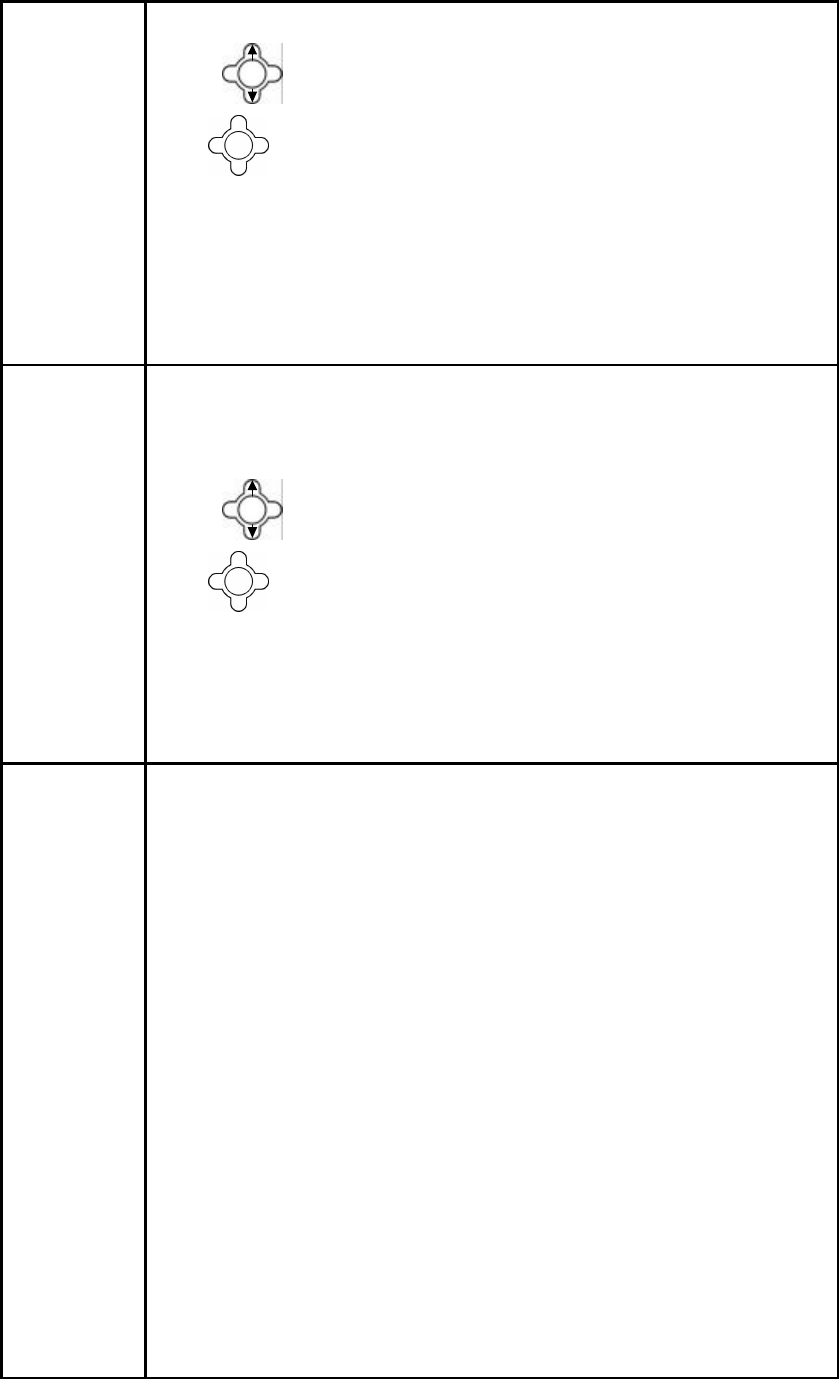
29
you’ve sent are displayed on the screen.
Press
to the mail you want to read and then
press View . Details (From, Date, Recipients and Subject)
are indicated.
You can also Forward (either Preview the detail, read the
Subject, set the Recipients, write the Content, Save To Draft
or Send Mail) or Delete the mail or Clear all mails in the
Outbox.
Draft In this menu, you can retrieve e-mail messages you saved.
When you select this menu, the list of the e-mail messages you
saved in the draft displays.
Press
to the mail you want to read and then
press View
. Details (From, Date, Recipients and Contents)
are indicated.
You can also Edit (either Preview the detail, read the Subject,
set the Recipients, write the Content, Save To Draft or Send
Mail) or Delete the mail or Clear all mails in the Draft.
Account
Setting
Mail→Account Setting
The following options are available:
Account Name: enter a name for the activated account.
Your Name: enter the name to be displayed as the sender
name.
Mail Address: enter your e-mail address.
Reply Address: can be either in English or IP address.
POP3 Address.: enter your e-mail address.
POP3 Port: provided by your network service provider. (default:
110)
POP3 User ID: enter your e-mail ID.
SMTP Address.: enter your e-mail address.
SMTP Port: provided by your network service provider. (default:
25)
SMTP User ID.: enter your e-mail ID.
Signature: enter your signature according to your preference.
Reserve Mail: you can store your mails on the server
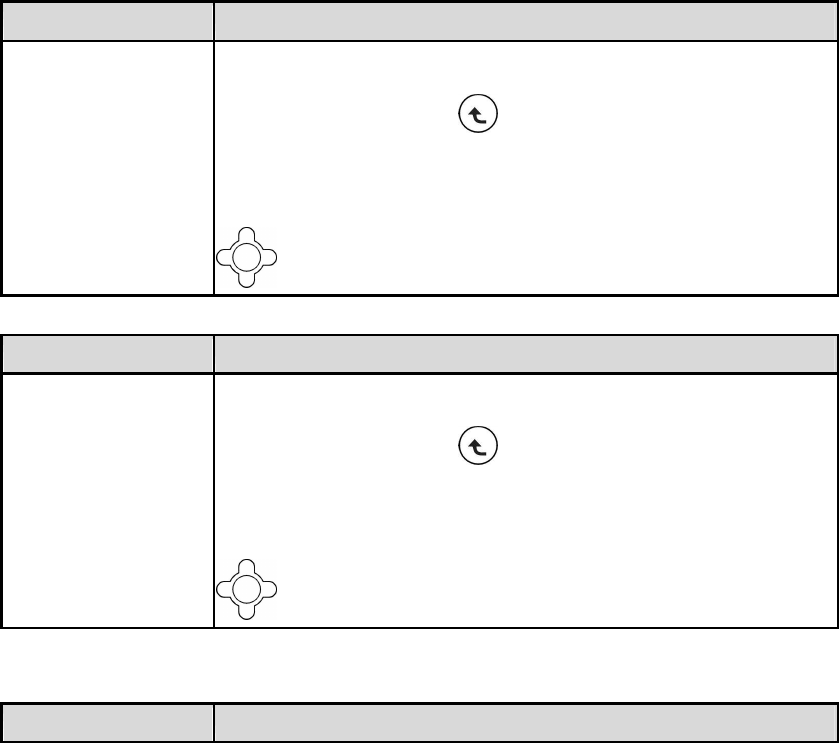
30
6.1.4 Speed Dial
n There are two ways to set Speed Dial, either through Phonebook menu
or by Speed Dial menu.
n Each entry you saved in your phonebook can be assigned as a unique
speed dial number (1-9) in phone memory.
Feature Description
Phonebook Select the entry to which you want to assign the speed
dialing number. Press Option to set the key
from the
Phonebook→Edit→Speed Dial.
Set the speed dial key from the 1 to 9 key, and press
Set the key.
Feature Description
Speed Dial Select the key to which you want to assign the speed
dialing number. Press Option and entries recorded
in the Phonebook is listed.
Set the speed dial key from the 1 to 9 key, and press
Set the key.
6.1.5 Profile
Feature Description
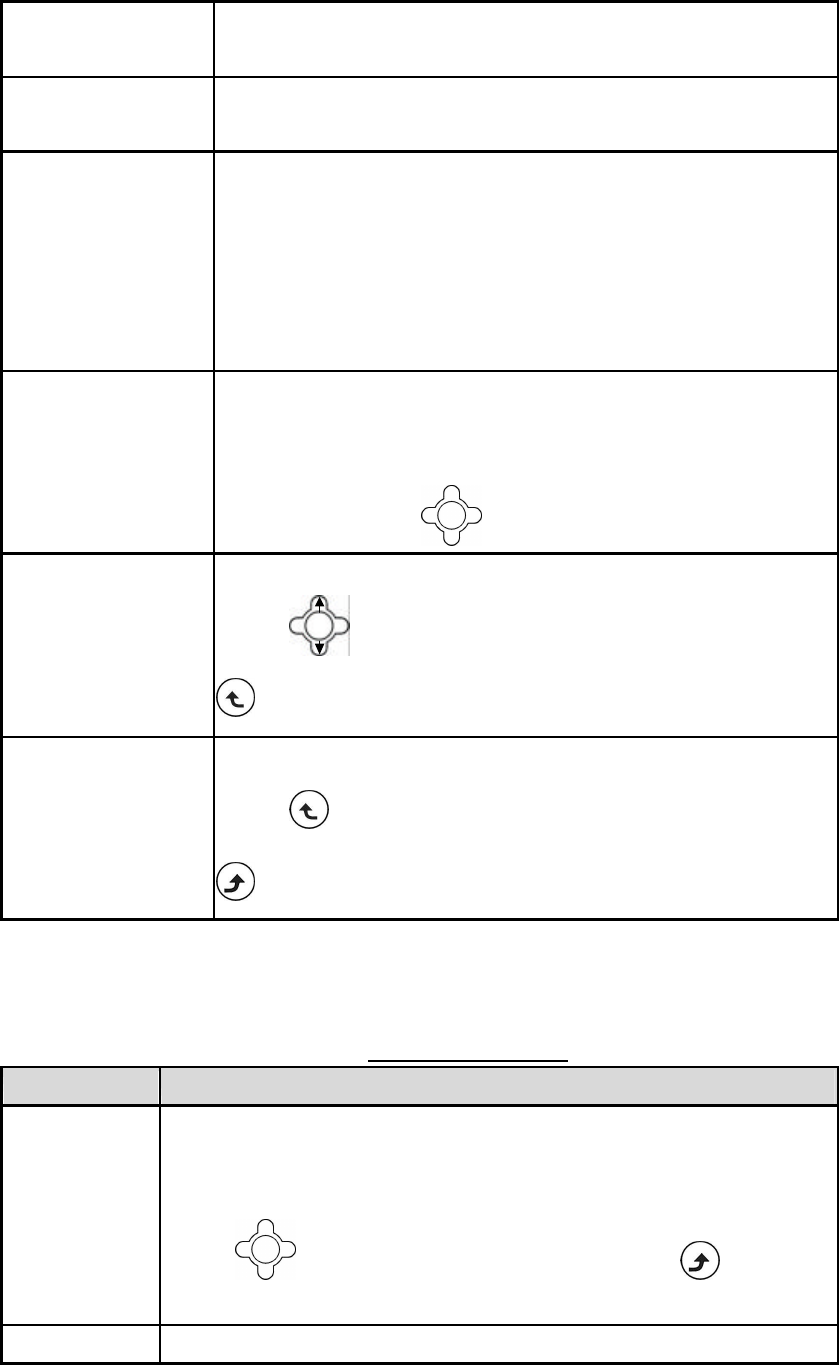
31
Network Profile Details refer to chapter 4.1 Quick Ways to Set Up Your
Wi-Fi Phone.
SIP Account Details refer to chapter 4.1 Quick Ways to Set Up Your
Wi-Fi Phone.
Roaming Profile→Roaming
→Roam Metric (you can set from 0 to -99).
→Roam Delta (you can set from 0 to 99).
→Nprobes (you can set from 100 to 1).
→Active Time (you can set from 1000 to 1).
→Home Time (you can set from 1000 to 1).
Profile Password
Profile→Profile Password
You can change your profile password.
Input first the “Old Password” and then input “New
Password”, press OK the new password is set.
Hotspot Profile→Hotspot
Press
to select one of five hotspots and then press
Set to confirm your choice.
Secure Setup Profile→Secure Setup
Press Yes to activate SES (security easy setup) or
Back to menu.
6.1.6 Settings
n This section helps you to use Settings’ features.
Feature Description
Language You can set the display language: English, Chinese (Trad.)
(optional), Chinese (Simp.) (optional) and Japanese (optional).
Settings→Language
Press Set to confirm your setting or press Back to
menu.
Clock Settings→Clock
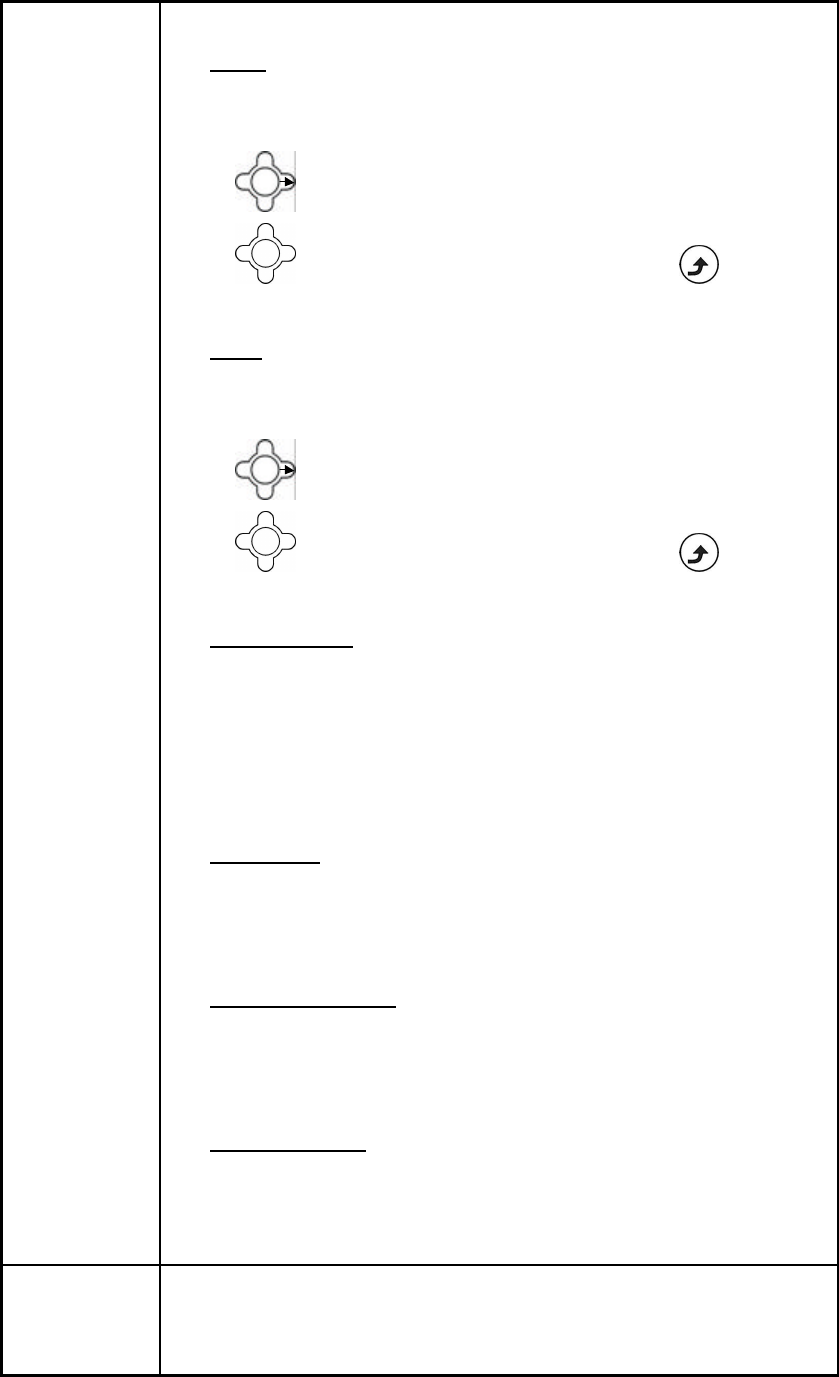
32
There are six options offered in Clock menu:
l Time:
This option enables you to adjust the current time.
Settings→Clock→Time
Press
and input the appropriate time with numeric keys.
Press OK to confirm your setting or press Back to
menu.
l Date:
This option enables you to adjust the current date.
Settings→Clock→Date
Press
and input the appropriate date with numeric keys.
Press OK to confirm your setting or press Back to
menu.
l Time Format:
You can set the desired display format (12-Hour or 24-Hour)
for the time.
Settings→Clock→Time Format
If 12-Hour is set as Time Format, the correspondent format
(AM/PM) indicates on the screen.
l Timezone:
You can set the timezone of your location to count the time
difference when you travel around the world.
Settings→Clock→Timezone
l DaylightSavings:
You can set Off or On if the daylight savings time is needed
(depend on different area).
Settings→Clock→DaylightSavings
l Network Time:
You can set Off or On for Network Time.
Settings→Clock→Network Time
If the network time is set On, then Time Server is listed.
Alarm Clock
This option enables you to set the alarm to ring at a specific
time.
Settings→Alarm Clock
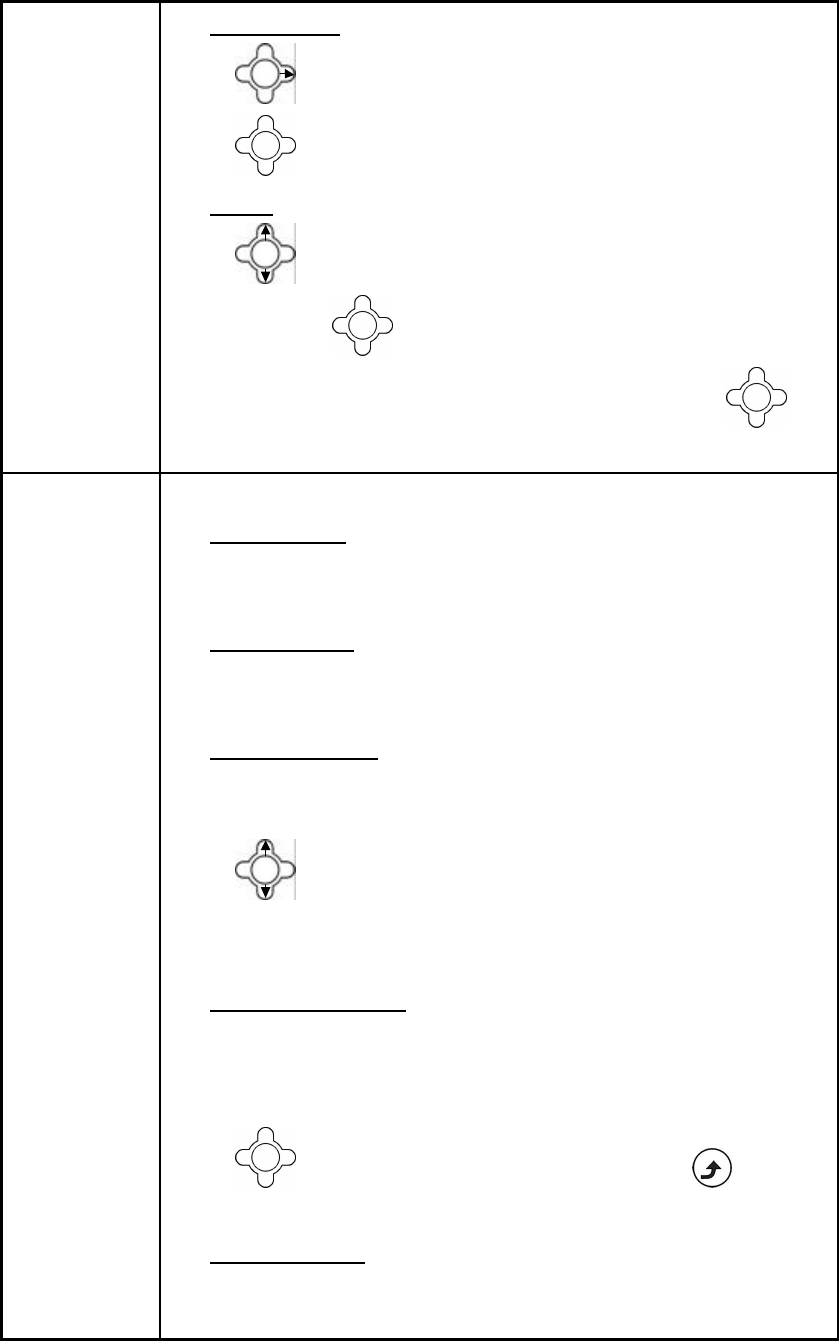
33
l Alarm Time:
Press
and input the appropriate time with numeric keys.
Press OK to confirm your setting.
l Mode:
Press
to activate the alarm clock Once, Daily or Weekly
and then press Set to confirm your setting.
To cancel the alarm clock, select Off and then press Set
to confirm your setting. .
Call Settings
Three options included in Call Settings:
l Call Waiting:
Details refer to chapter 5.5 Using Call Waiting.
Settings→Call Settings→Call Waiting
l Call Forward:
Details refer to chapter 5.6 Using Call Forwarding.
Settings→Call Settings→Call Forward
l Block Caller ID:
This feature allows you to hide your phone number to the
calling party.
Press
to select On or Off to activate/deactivate this
function.
Settings→Call Settings→Block Caller ID.
l Beep Notification:
This feature allows you to set Off or On for beep awareness at
the 50 seconds for every 1 minute interval.
Settings→Call Settings→Beep Notification.
Press Set to confirm your setting. Or press Back to
the menu.
l Hold Transfer:
This feature allows you to transfer your call via SIP server or
DTMF Flash.
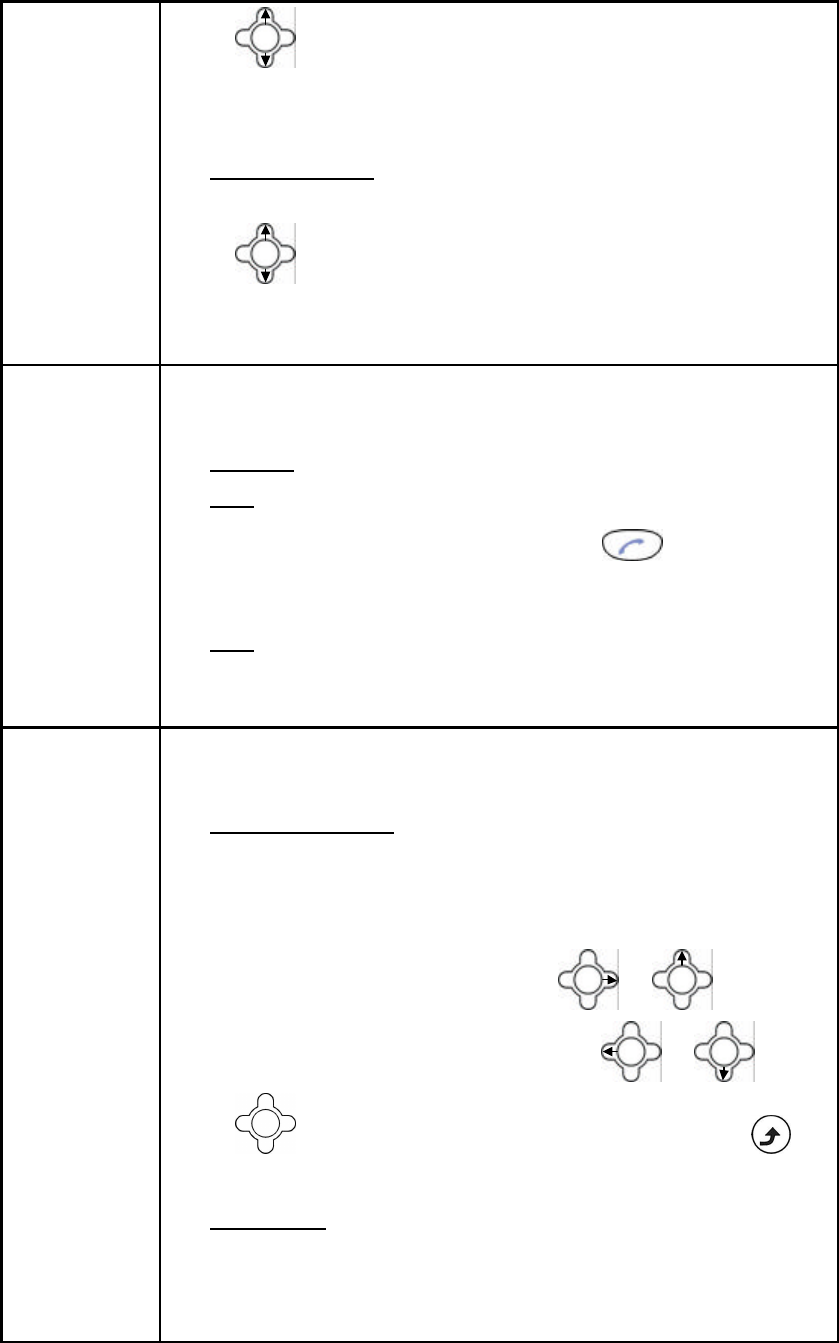
34
Press
to select SIP or DTMF Flash as setting your hold
transfer preference.
Settings→Call Settings→Hold Transfer.
l Regional Tone:
This feature enables you to set specific call progressing tone.
Press
to select North America or Japan
as regional tone
setting.
Settings→Call Settings→Regional Tone.
Speed Dial There are three options for you to choose:
To Disable, to Ask or to Dial the speed dial.
l Disable: deactivate the speed dial function.
l Ask
: press and hold the numeric key (e.g 1) the screen will
display the numbers and then press to make the
call.
l Dial: press and hold the numeric key (e.g 1) to make the
call directly.
Settings→Speed Dial
Sound
Settings
Settings→Sound Settings
Four options included in Sound Settings:
l Speaker Volume:
You can adjust the speaker volume by using 5-way navigation
key.
Settings→Sound Settings→Speaker Volume
To level UP the volume, either press
or
.
To level DOWN the volume, either press
or
.
Press OK to confirm your setting and then press
Back to menu.
l Ring Tone:
You can select the preferred Melody and/or set the Ring
Volume in Ring Tone menu.
Settings→Ring Tone→Ring Volume
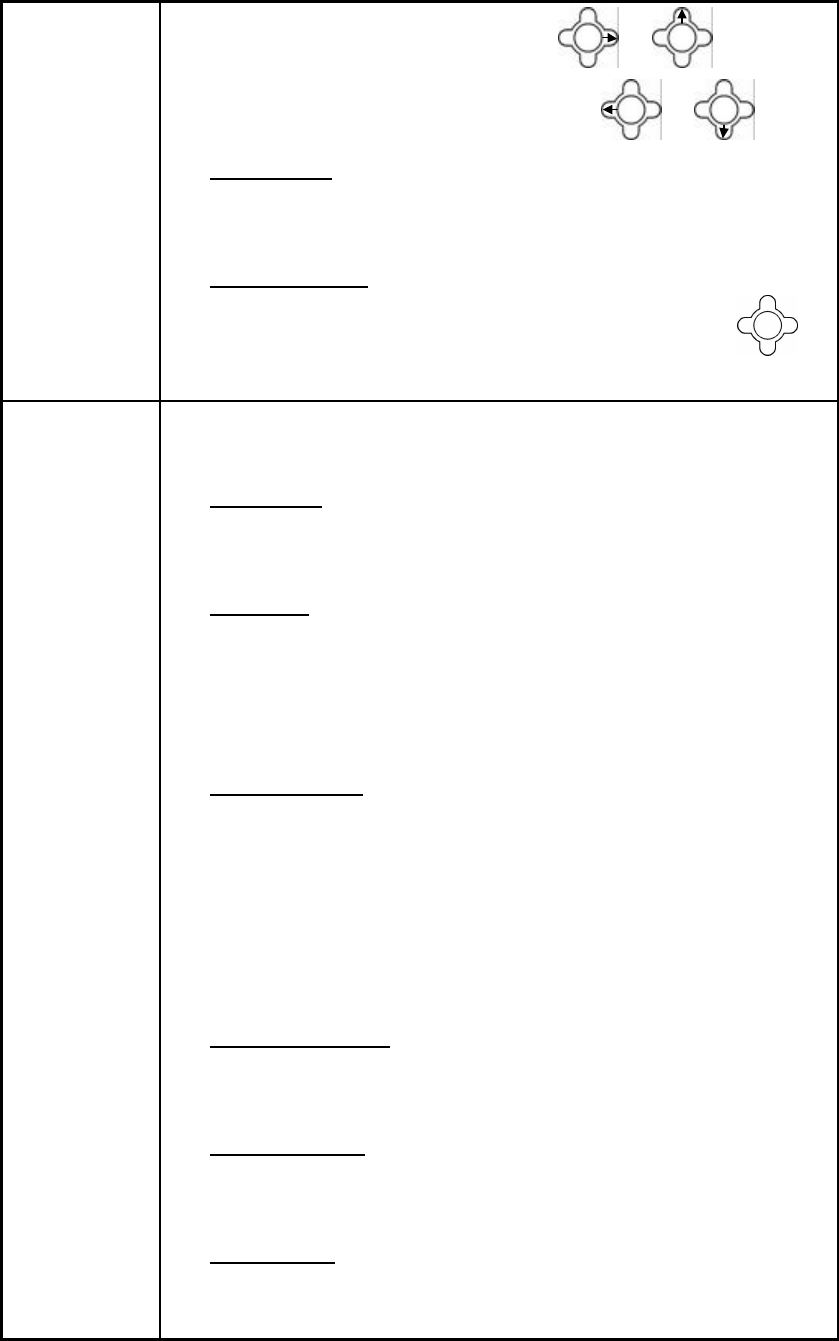
35
To level UP the volume, either press
or
.
To level DOWN the volume, either press
or
l Ring Mode:
Details refer to chapter 4.4 Setting a Ring Mode.
Settings→Ring Mode
l Warning Tone:
You can either turn On or Off for warning tone. Press
Set
to confirm your setting.
Display
Settings
Settings→Display Settings
Five options included in Display Settings:
l Wallpaper:
Details refer to chapter 4.5 Setting a Wallpaper Image.
Settings→Display Settings→Wallpaper
l Greeting:
This option enables you to set welcome words as greeting and
to be displayed when the phone is powered on.
Settings→Display Settings→Greeting
*Text input method refer to chapter 3.2 Entering Text.
l LCD Off Time:
You can select the period of time the LCD is on. The backlight
turns on when you press a key and turns off when there is no
activity for the specified time period.
You can either select LCD off time as Always On, 15 Seconds
or 30 Seconds.
Settings→Display Settings→LCD Off Time
l LCD Brightness:
Details refer to chapter 4.7 Adjusting the Backlight.
Settings→Display Settings→LCD Brightness
l LCD Contrast:
Details refer to chapter 4.6 Setting the Display Contrast.
Settings→Display Settings→LCD Contrast
l Config. Tip:
This feature facilitates you to view all the settings you’ve set. A
small window indicates the value of each setting you’ve done.
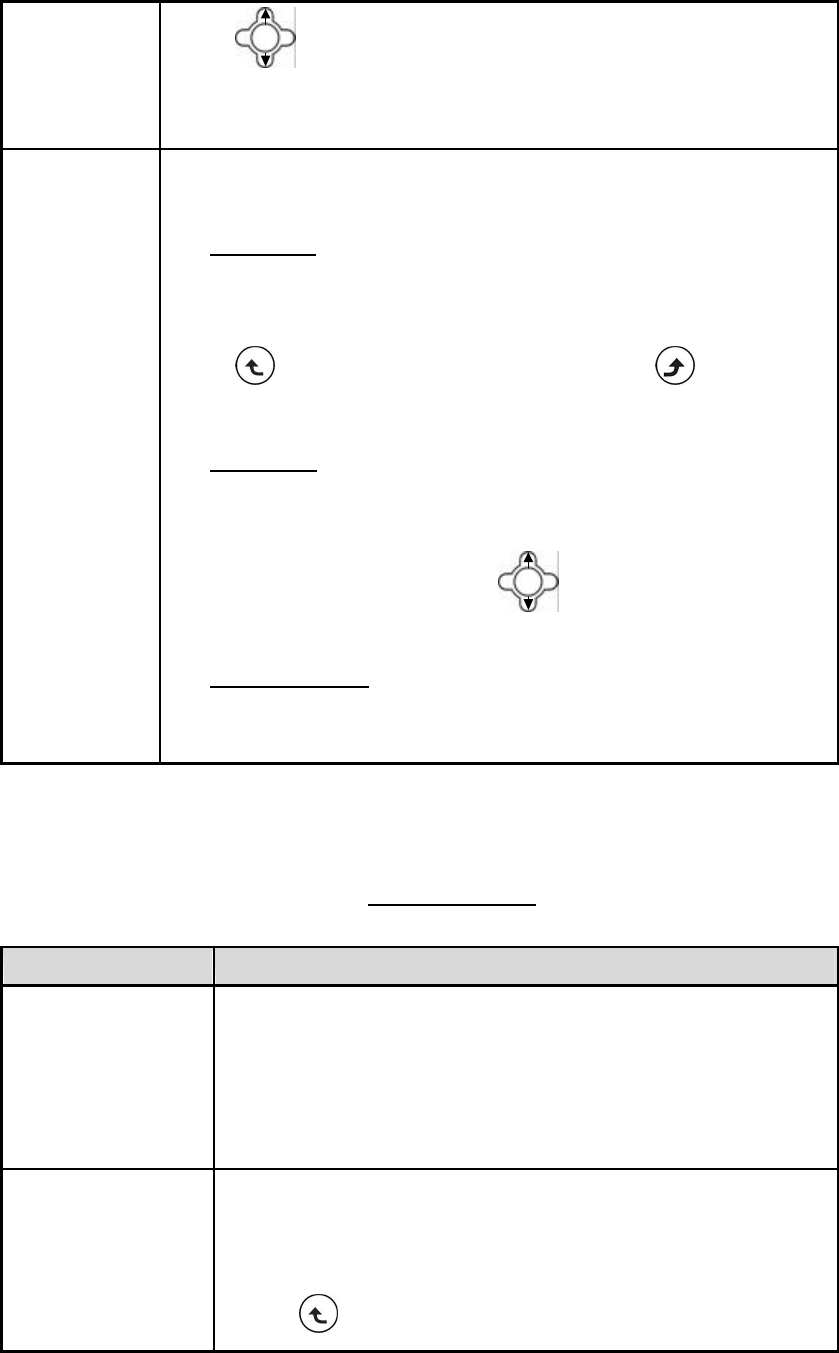
36
Press
to select On or Off to activate/deactivate this
function.
Settings→Display Settings→Config. Tip
Keypad Settings→Keypad
Three options included in Keypad:
l Key Lock:
Key lock is used to prevent unintentional pressing of keys.
Settings→Display Settings→Keypad Lock
Press OK to process the action or press Back to the
menu.
l Key Tone:
You can activate the tone that the phone sounds when you
press a key.
To activate the key tone, press
to select Click Tone. To
deactivate the key tone, select Tone Off.
l Key Backlight:
You can activate (set as On) the key backlight when you press
a key.
6.1.7 Tools
n This section helps you to use Tools’ features.
Feature Description
Signal Quality This menu displays the status of current wireless
connection, including ESSID, BSSID, Channel, Rate,
RSSI, Noise and Security.
Tools→Signal Quality→ESSID/ BSSID/ Channel/ Rate/
RSSI/ Noise/ Security
Site Survey This menu lists all available networks.
You can see all listed networks (sites)’ information.
Tools→Site Survey
*Press Renew to rescan the networks.
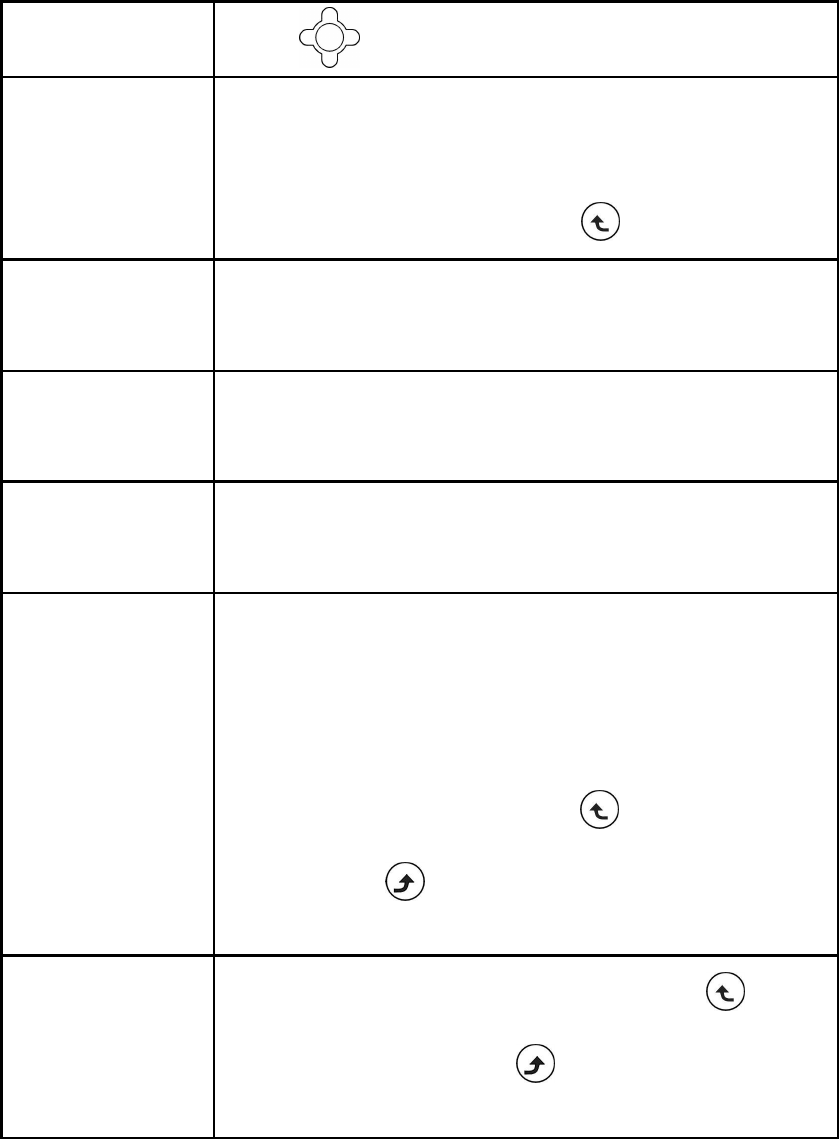
37
*Press Detail to check the details.
Statistics In this menu, you can check the following information: IP
Statistics, RTP/RTCP, Encoding and Decoding.
Tools→Statistics
*To refresh the information, press to set Renew.
Battery In this menu, you can see Charger Status and Voltage
level.
Tools→Battery
Ping In this menu, you can check the reaching status to a host
network.
Tools→Ping
Version In this menu, information of Bootcode, Firmware, Built
Time and RAM Size are listed.
Tools→Version
Back to Default You can either Clear the original data recorded in
Phonebook, E-mail or Others. You can also remove All
settings on your phone at once.
A message (such as Clear Phonebook & Speed Dial?;
Clear E-mail?; Clear Others?; Clear All?) pops up on the
screen before the deleting. Press OK to process the
action or press Back to the menu.
Tools→Back to Default
Restart A message “Restart?” will pop up first. Press OK to
process the action or press Back to the menu.
Tools→Restart
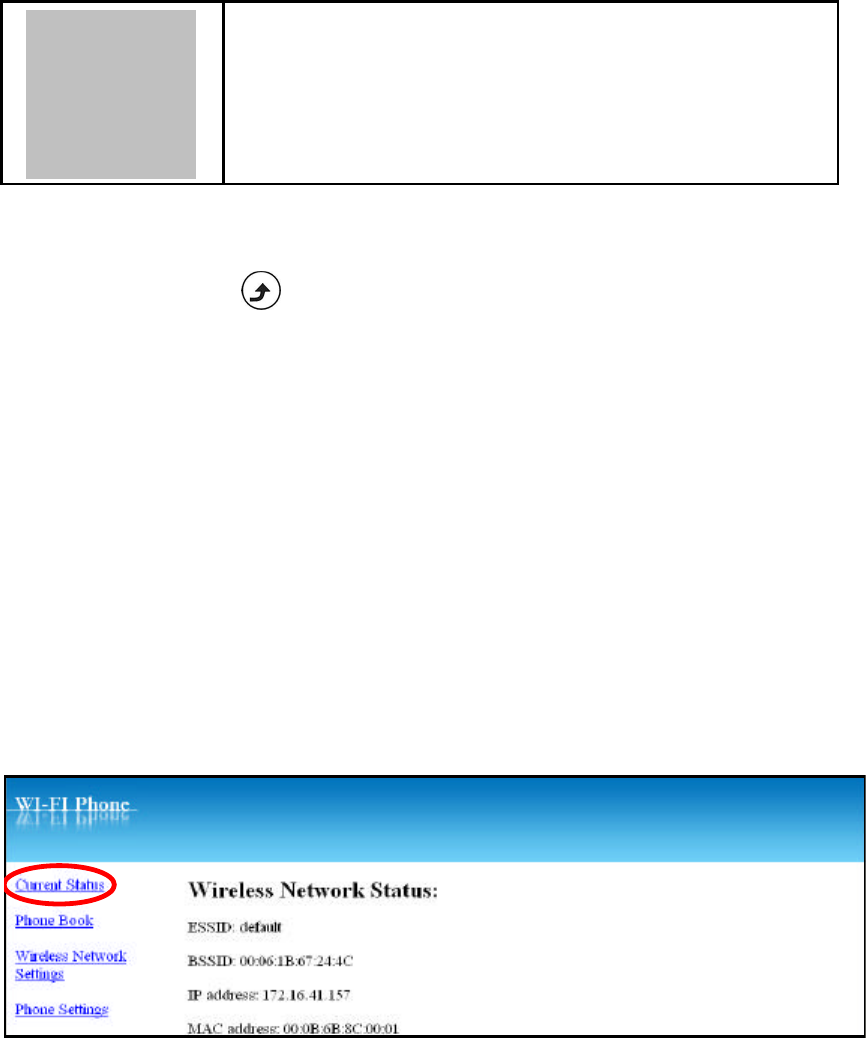
38
7
7. Web Configuration
1. You can connect your PC to adjust the Web Configuration
2. In Standby, press Status to view your Phone Status-IP Address. A
connected IP address is indicated. For exemple:172.16.140.174.
3. Enter the IP address in your Web browser http:// 172.16.140.174.
The following options are listed letting you configure:
Current Status, Phone Book, Wireless Network Settings, SIP Settings,
Phone Settings, E-mail Settings, Upgrade Software, Upgrade Bootcode,
Debug Statistics, Reboot Phone, Password and Logout.
7.1 Checking Wireless Network Status
n By selecting Current Status, you will view the Wireless Network
connecting Status: ESSID, BSSID, IP address and MAC address are
indicated.
7.2 Phone Book
n Using Phone Book in Web Configuration, you can also add, store, edit or
even remove all recorded list.
1. Select New and then input the Name (20 characters as max. length),
E-mail, Ring Tone, Number and/or set the Speed Dial (1 to 9).
2. After filling the details, you can either Save, Delete, Cancel or Reset the
entry.
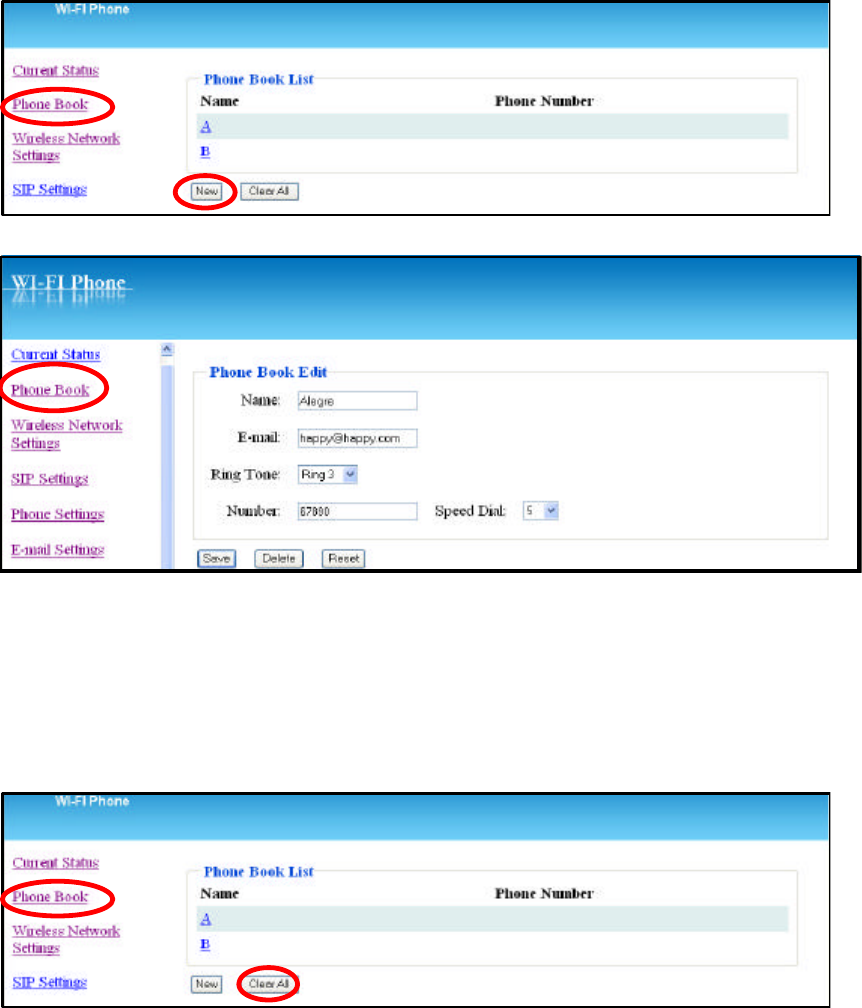
39
3. You can delete all the recorded entries by pressing Clear All.
4. A pop-up message “Are you sure you want to clear all phone book?”
display on the screen.
5. Press OK to confirm your setting. All entries then are removed from the
phone book.
7.3 Wireless Network Settings
n Network Profile List will be firstly indicated on the page.

40
1. To adjust the profile, click Configure to enter the sub-menu.
2. Following options indicated:
ü Wireless Network Settings:
Network Profile Name Input the network profile name.
ESSID Details refer to p.16.

41
Data Rate It can be either set as Auto, 1Mbp/s,
2Mbp/s, 5.5Mbp/s, 6Mbp/s, 9Mbp/s,
11Mbp/s, 12Mbp/s, 18Mbp/s, 24Mbp/s,
36Mbp/s, 48Mbp/s or 54Mbp/s.
Security Options include: OPEN, WEP-64,
WEP-128, WPA-PSK TKP, WPA, PSK AES,
WPA2-PSK TKP, WPA2-PSK AES, WPA
TKIP, WPA AES, WPA2 TKIP, WPA2 AES
IP Setting You can either set DHCP, Fixed IP or
PPPOE.
NAT Setting You can either set Disable, SIP PING or
STUN. You can also set NAT timer.
ü Certification: You can view all information about Certification
(CA Cert./ User Cert./ Private Key) in this section.
ü SIP Account Choice:
SIP Account Choice Default or None can be set.

42
7.4 SIP Settings
1. You can edit the SIP account from the SIP Account list and press
Configure.
2. The following options are indicated: SIP Account Name, Phone Number,
Authentication ID, Authentication Password, SIP Domain, Proxy
Address, Outbound Address, Local Port, Register Timer(sec), Codec
(Auto/G.711u/G.711a/ G129A), Pkt Time(ms)(Default,
20,30,40,50,60,70,80), OutofBand DTMF (Off/On).
3. Select Save to confirm your setting.
4. You can either Cancel or Reset the process.
7.5 Phone Settings
n This section helps you to adjust your phone.
n The following options are listed:
Clock Three options can be set: Time Zone, Daylight Savings
and Network time. (details refer to p. 30)
Call Settings You can set Call Waiting, Forward Number, No Answer,
Block Caller ID, Beep Notification, Hold Transfer,
Forward All, Busy, Refuse Private and Regional Tone in
Call Settings. (details refer to p. 32)
Sound Settings You can set Speaker Volume, Ring Volume, Warning
Tone, Melody and Ring Mode in Sound Settings. (details
refer to p. 33)
Display Settings You can either set LCD Off Time or Wallpaper in Display
Settings. (details refer to p. 34)

43
7.6 E-mail Settings
n This section helps you to adjust your e-mail account.
1. To adjust your e-mail account, click Configure to enter the sub-menu.
2. The following options are listed: Account Name, Your Name, Mail Address,
POP3 Address, POP3 User ID, POP3 Password, POP3 Port, SMTP
Address, SMTP User ID, SMTP Password, SMTP Port, Reply Address and
Signature.
3. You can also Remove or set Activate to one of the five e-mail accounts.
7.7 Upgrade Software
n This option enables you to upgrade your phone’s software.
7.8 Upgrade Bootcode

44
n This option enables you to upgrade your phone’s bootcode (starting
system).
7.9 Debug Statistics
n Detailed information about Debug Statistics is all listed.
n Information includes: Wireless Network Status (ESSID, BSSID, IP
address, MAC address), WL Info (rssi is, noise is, No scan in
progress, current mac channel, target channel, Receive, Transmit),
RTP Stats (igrRtpPkt, igrRtpByte, egrRtpByte, egrRtpCumLostPkt,
egrRtpNoProfDiscPkt, igrRtpPkt, egrRptJitter, igrRtpLatency), PVE
Stats (peakHoldingTime, packetCount, addTailCount, reorderCount,
overrunCount, duplicateCount, outOfRangeCount, tooLateCount,
cantDecodeCount, ajcUnderrunCount, ajcDeleteCount,
ajcRepeatCount, ajcResyncCount, ajcPhaseJitterCount,
inactiveFrameCount, activeFrameCount, sidFrameCount,
toneRelayCount) and PVE State (timer, expectedTimestamp,
lastArrivalTime, lastArrTimeStamp, lastReleaseTimestamp,
actualHoldTime, currentHoldTime, minHoldTimeTracker,
masHoldTimeTracker, releaseBump, underrunDuration,
actionPendingTimer, currentDec, timerLastArrival, currentEnc,
currentEncPktTime, currentEncPktSize).
7.10 Reboot Phone
n After upgrading software it is necessary to re-power on the phone to
activate all new settings.

45
7.11 Password
You can change the original password by using this feature.

46
7.12 Logout
n To exit the web configuration, select Logout.

47
8
8 Troubleshooting
1. Unable To Register With The SIP Server
Ø Make sure the Internet and the SIP proxy server are reachable.
Ø Make sure the SIP account and the password are correct.
2. Which Codec Should I Choose
Ø As which codec choice is depending on what codec is supported on both
end of the VoIP host. Generally a codec with low bandwidth consumption
and high voice quality is a good codec.
3. How Good Is The Call Quality
Ø Technology advances in IP telephony transportation have made Internet
calling as good as or better than normal PSTN connections. This is mostly
effective for high speed Broadband connections, whereas dial up services
have some way to go before delivering the quality of PSTN calling.

48
9
8 Federal Communication Commission Interference
Statement
This equipment has been tested and found to comply with the limits for
a Class B digital device, pursuant to Part 15 of the FCC Rules. These limits
are designed to provide reasonable protection against harmful interference in
a residential installation. This equipment generates, uses and can radiate radio
frequency energy and, if not installed and used in accordance with the
instructions, may cause harmful interference to radio communications.
However, there is no guarantee that interference will not occur in a particular
installation. If this equipment does cause harmful interference to radio or
television reception, which can be determined by turning the equipment off and
on, the user is encouraged to try to correct the interference by one of the
following measures:
- Reorient or relocate the receiving antenna.
- Increase the separation between the equipment and receiver.
- Connect the equipment into an outlet on a circuit different from that to
which the receiver is connected.
- Consult the dealer or an experienced radio/TV technician for help.
FCC Caution: Any changes or modifications not expressly approved by
the party responsible for compliance could void the user's authority to operate
this equipment.
This device complies with Part 15 of the FCC Rules. Operation is
subject to the following two conditions: (1) This device may not cause harmful
interference, and (2) this device must accept any interference received,
including interference that may cause undesired operation.
IMPORTANT NOTE: Radiation Exposure Statement:
This equipment complies with FCC radiation exposure limits set forth for
an uncontrolled environment. End users must follow the specific operating
instructions for satisfying RF exposure compliance. To maintain compliance
49
with FCC RF exposure compliance requirements, please avoid direct contact
to the transmitting antenna during transmitting.
This transmitter must not be co-located or operating in conjunction with
any other antenna or transmitter.
We declare that the product is limited in CH1~CH11 by specified
firmware controlled in the USA.